






Americans have the worst health care among the world’s wealthy nations, a new report says.
People in the United States die the earliest and live the sickest lives out of 10 developed countries, even though the United States spends the most on health care, according to the annual report by health care thinktank The Commonwealth Fund.
Australia, the Netherlands and the United Kingdom rank highest out of the 10 countries included in “Mirror, Mirror 2024: A Portrait of the Failing U.S. Health System.”
“While other nations have successfully met their populations’ health needs, the U.S. health system continues to lag significantly,” said Reginald Williams II, vice president of international health policy and practice innovations with The Commonwealth Fund.
For the report, researchers compared nations’ health systems based on 70 specific measures across five
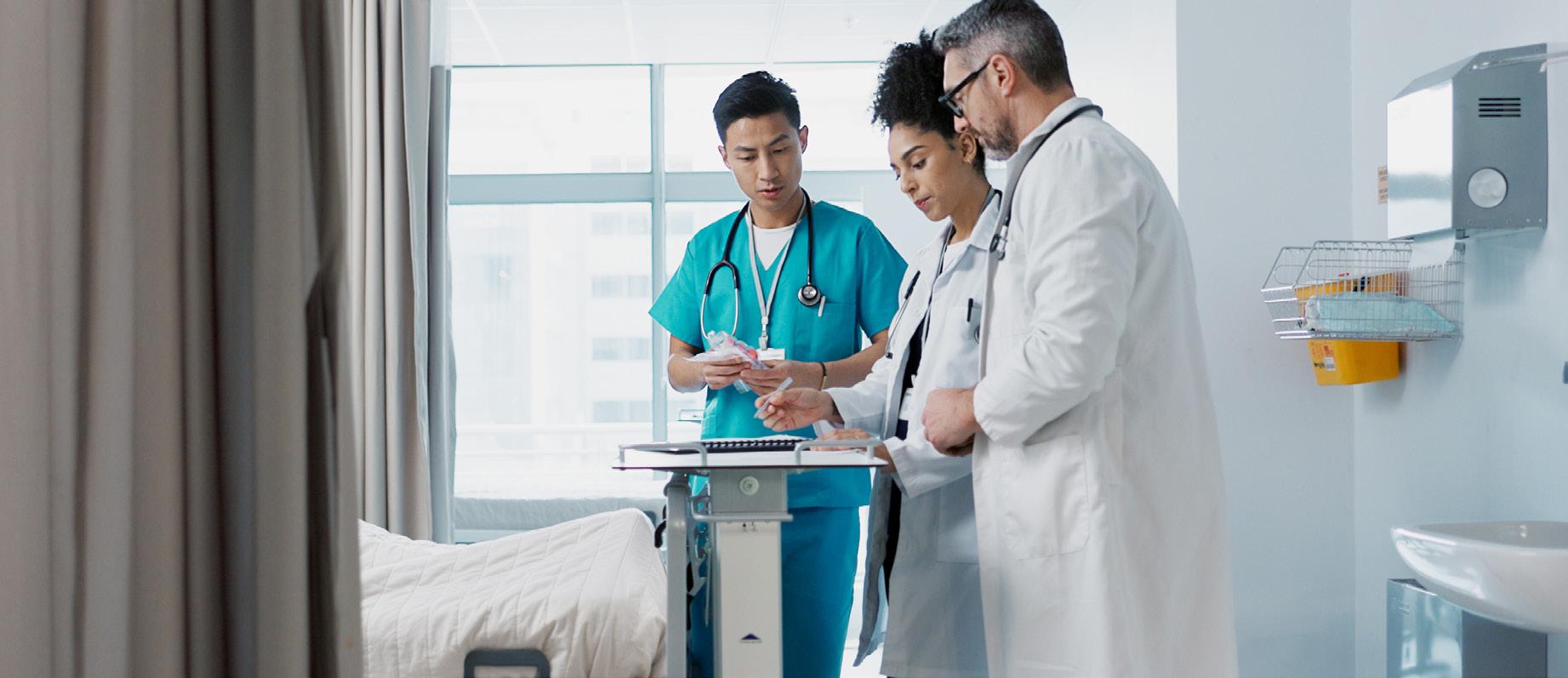
areas of performance. Other nations measured against the United States included Canada, France, Germany, New Zealand, Sweden and Switzerland.
The report found that:
• People in the United States have the shortest lives and the most avoidable deaths, ranking dead last on five out of six health outcome measures;
• Americans face the most barriers to obtaining health care. About 25 million people remain uninsured in this country, and nearly a quarter can’t afford care when they need it;
• The United States ranks lowest in health equity, with many low-income people unable to afford care and more groups reporting unfair treatment and discrimination when seeking care;
• Patients and doctors in the United States experience heavy administrative burdens when it comes to payment, billing and paperwork, with the system outranking only
Switzerland in its lack of efficiency.
The United States had just one bright spot in the report.
The nation ranked second among the countries in “care process,” which includes prevention, safety and patient engagement. The Affordable Care Act’s emphasis on patient safety and preventive services partly explains the high ranking, the researchers said.
“The U.S. is failing one of its principal obligations as a nation: to protect the health and welfare of its people,” said physician Joseph Betancourt, president of the Commonwealth Fund.
“The status quo — continually spending the most and getting the least for our health care dollars — is not sustainable,” Betancourt added in a Commonwealth Fund news release. “It isn’t about lack of resources — it’s clearly about how they are being spent. Too many Americans are living shorter, sicker lives because of this failure.”
The report argues that the United States could improve its health care comparative to other nations by:
• Extending coverage to the remaining uninsured and reforming health insurance to limit out-of-pocket expenses;
• Investing in primary care providers, so more are available to patients;
• Removing health inequities faced by minority and ethnic groups, rural residents and women;
• Curbing the uncontrolled consolidation of health care systems, which is driving prices higher;
• Address social drivers of health like poverty, homelessness, hunger, gun violence and substance use.
“This report shows that by adopting proven strategies and making smart investments, America can enhance its health system to better meet the needs of its people,” Williams said. “There’s no reason we can’t elevate our standing if we choose to do so.”


Workplace anxiety. Who hasn’t experienced it?
However, if that anxiety is so strong that it hurts your performance or lingers for months, you might have a problem, one expert says.
Physician Asim Shah, executive vice chairman in the Menninger Department of Psychiatry and Behavioral Sciences at Baylor Colege of Medicine in Houston, explains what can trigger workplace anxiety, how to manage it and when to seek professional help.
“The goal is not to suffer and not let your anxiety affect work performance. About 60% of people experience workplace anxiety. It is common, which means you can do something about it,” Shah said.
Workplace anxiety can be caused by surly coworkers, a demanding supervisor, small, annoying tasks or overwhelming major projects.
If you have workplace anxiety, you might notice signs like:
• Feeling overly anxious or nervous;
• Experiencing excessive sweating or trembling;
• Obsessing about a task;
• Having a lack of interest in your work.
“The anxiety becomes so overwhelming that you are unable to focus and concentrate,” Shah noted in a Baylor news release. “These feelings can impair your daily work functions.”
If that continues for more than six months, Shah said it might be time to seek professional help.
“Some employers might offer an employee assistance program where you can go for help. You can also start talking to a therapist through psychotherapy or look into medication management for your workplace anxiety,” he said.
To manage it and help to reduce stress, Shah recommends:
• Break your tasks into small pieces;
• Set small goals throughout the work week and congratulate yourself for reaching them;
• Express your emotions. Journal how you feel. Talk, laugh or cry with someone you confide in;
• Start healthy habits and do things you enjoy;
• Work within your limits. Set boundaries with your workload.
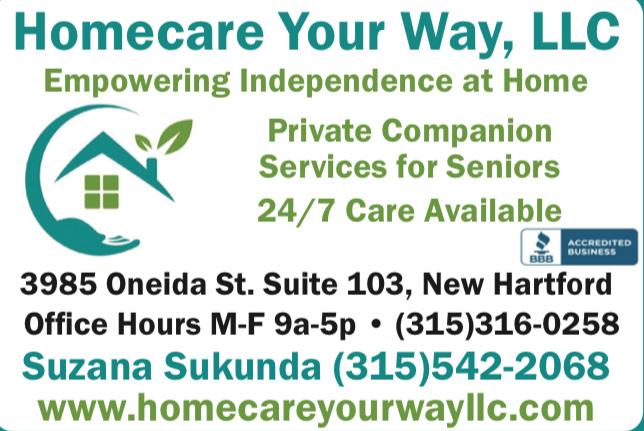

Personalized Care and Connection Provided by Valley Health Services
Discover the ideal daytime care solution for adults who wish to remain independent and residing in their own homes. We offer daily physical, mental, and social wellness services at our dedicated space in Little Falls Hospital.
In Good Health is published 12 times a year by Local News, Inc. © 2024 by Local News, Inc. All rights reserved. 4 Riverside Drive, # 251, Utica, NY 13502 Phone: 315-749-7070 • Email: IGHmohawkvalley@gmail.com A monthly newspaper published by Local News, Inc. 20,000 copies distributed. To request home delivery ($21 per year), call 315-749-7070.
Editor & Publisher: Wagner Dotto • Associate Editor: Stefan Yablonski
Contributing Writers: Barbara Pierce, Deb Dittner, Gwenn Voelckers, David Podos, Deborah Jeanne Sergeant, Anne Palumbo, Jolene Cleaver
Advertising: Amy Gagliano: 315-402-3370 • Email: amyIGHmv@gmail.com
Layout & Design: Angel Campos-Toro • Office Manager: Allison Lockwood
material may be reproduced in whole or in part from this publication without the express written permission of the publisher. The information in this publication is intended to complement — not to take the place of — the recommendations of your healthcare provider.
By George W. Chapman

The Inflation Reduction Act has already capped insulin at $35 a month for seniors on Medicare. In 2025, out-of-pocket costs for prescriptions will be capped at $2,000 a year. These alone will save members $1.5 billion a year. The Centers for Medicare and Medicaid Services (CMS) is just about done negotiating
While CMS finally negotiates drug prices for over 60 million Medicare recipients, commercial insurers that cover employees are on their own.
pricing with drug manufacturers for the first 10 drugs under the Inflation Reduction Act. The reduced prices will be in effect 2026. CMS will begin round two of price negotiations for another 15 drugs effective 2027. These savings on just 25 drugs will be in the billions for CMS and Medi-
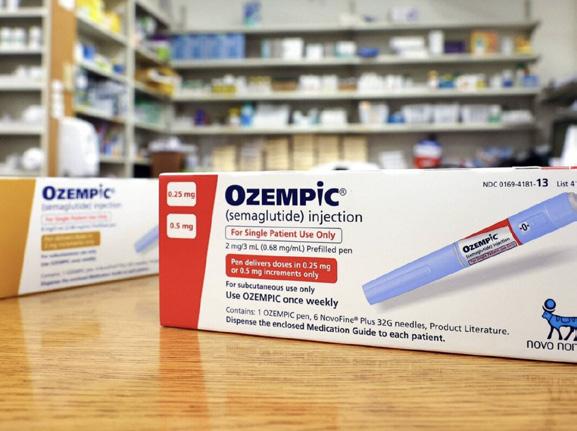
Drug manufacturers are free to charge whatever they want. A senate committee recently grilled the CEO of Novo Nordisk, maker of Ozempic for Type 2 diabetes and Wegovy for weight loss. The difference in pricing between the U.S. and other countries is sickening if not criminal. In the U.S., Ozempic costs $969 a month. Yes — a month. It’s $59 in Germany; $71 in France; $122 in Denmark; and $122 in Canada.
In the U.S., Wegovy costs $1,349 a month. Again. A month. It’s $92 in the UK; $137 in Germany; $186 in Denmark; and $265 in Canada.
When pressed by the committee why, the CEO skirted the question and tried to put the entire blame on PBMs or pharmacy benefit managers. Really? While PBMs are another problem altogether, they are in no way accountable for the absurd differences in costs, (PBMs “negotiate” prices for their clients. But they get a payment of around 74 cents for every dollar eventually charged by Novo Nordisk. So, there is sort of a
perverse incentive against negotiating a really low price. The FTC has released a damning report on PBMs.)
The Novo Nordisk CEO absolutely knows the real reason why we pay so much more in the U.S. He just didn’t want to admit it. All the other countries have national health and negociate prices for every drug covered, including Ozempic and Wegovy, by their national plans for every citizen. Not just 10 prices for their seniors. I’m sure there were a few senators on the committee sheepishly looking at their hands because they accept money from the ubiquitous and wealthy drug lobby.
Everyone at the hearing knew exactly what the answer was. And until we have a national plan, the drug lobby will grease palms and we will continue to be ripped off by drug manufacturers and PBMs.
Over 12 million of us purchase health insurance on the exchange. Premiums are discounted based on federal poverty guidelines. As an incentive to buy insurance, qualifying households are eligible for a premium tax credit. The average is about $800. The tax credit will expire next year. There is a bill

care recipients. Part D premiums will decrease next year from 2024 levels. For advantage plan members, the average monthly premium will decrease from $18.29 to $17. For Medicare members with traditional coverage, the average monthly premium will decrease from $41.63 to $40.
in congress that would make the tax credit premium for fear people will drop coverage without it. Overall, 45 million of us are covered by the ACA.
CVS ventured outside its pharmacy “lane” or area of expertise when it expanded into primary care clinics, pharmacy benefit management (Caremark) and insurance (Aetna Medicare) among other things. Their multifaceted business model intended to offer easy accessible, low cost, integrated care. As with many corporations, rapid overdiversification can lead to its downfall. CVS stock had fallen 20% from last year while the rest of the S&P has risen 21%. Industry experts surmise the negative press associated with PBMs and lower profits in their Medicare product could put both businesses on the chopping block.
‘I looked up hospitals in the broad region covering Watertown to Binghamton and Rochester to Albany. I didn’t find a 5-star facility. But I found four hospitals that received a 4-star rating: Guthrie in Cortland, Albany VA, St. Peter’s Albany and Cayuga Medical in Ithaca. All the other hospitals in the region received two or three stars.
seniors, employers must face cost reduction on their own. Premiums for commercial insurance could increase anywhere between 7% and 9% next year which means the U.S. will retain its ignominious lead in average per capita cost at $16,000. A recent survey found most employers are looking to cut costs thereby limiting cost shifting to their employees. A third of employers, however, say they will continue to shift costs to their employees via premium contributions, higher deductibles and higher copays. Twenty-one percent will offer drug discount cards and direct to consumer prescriptions and delivery. Forty-three percent will bid out their health plan. Thirty percent plan to explore narrower networks. Thirty-eight percent will reevaluate employee assistance programs like mental health. The top area of focus for all employers is drug costs, especially for weight management, cardiovascular health, cancer and women’s health.

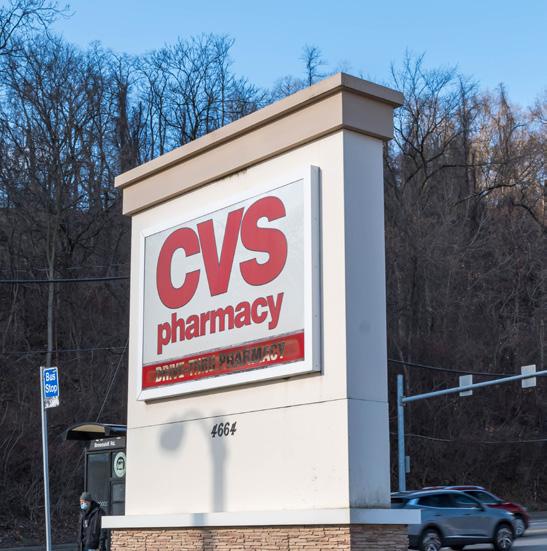
CMS surveys our nursing homes and hospitals every two to three years. Hospitals receive a detailed report and must submit a plan of correction. Failure to improve can impact Medicare reimbursement. CMS uses a 5-star rating system. Metrics include quality, safety, staffing, etc. The average score for NYS hospitals is about 2.5 stars. Thirty-four of 133 NYS hospitals received one star. That’s 26%. The national average is 10%. You can look up a hospital or nursing home rating on Medicare. gov. I looked up hospitals in the broad region covering Watertown to Binghamton and Rochester to Albany. I didn’t find a 5-star facility. But I found four hospitals that received a 4-star rating: Guthrie in Cortland, Albany VA, St. Peter’s Albany and Cayuga Medical in Ithaca. All the other hospitals in the region received two or three stars.
Who isn’t? While Medicare is tackling costs via the Inflation Reduction Act and reducing premiums for

erates GW Chapman Consulting based in Syracuse.
Writer recalls the hours before hurricane Milton hit Florida … and right after it. ‘The massive destruction this storm left behind is devastating,’ she writes
By Barbara Pierce
Tuesday: Oct. 8: “There’s a category 5 hurricane coming this way!” my daughter says as I answer her call. “We’re evacuating. You should, too.”
Oncoming hurricane Milton is rapidly intensifying, surprising everyone with its rapid buildup. Hurricanes are rated category 1 to 5 — 5 being the worst.
“Catastrophic,” “life threatening,” “unprecedented,” are the words I hear when I turn on TV to learn more.
I’m sitting right in the path of where it’s expected to make landfall.
I’m in an evacuation zone, meaning I’m in a most vulnerable area and should not stay during the hurricane.
I’ve been through several hurricanes in Florida, my home state. It was difficult to sit there with the wind howling, the rains pouring and no power. But what I found much worse was the days after the hurricane, when I saw the devastation done. When I couldn’t drive down the street because of the trees down and no street lights. The road to my house was under water. My house was OK as it was on stilts.
It’s not getting through hour and hour of the hurricane’s fury — it’s the aftermath that’s heartbreaking.
I am not leaving for this hurricane. I have severe back pain. I’d spent the last days and nights in a recliner, positioned at exactly the right level, with an ice pack as that was the only thing tolerable. I couldn’t sit in my car and drive, with hundreds of others, to go to someplace strange. And hotels don’t offer recliners to sleep in.
I meet others in my building. “Are you leaving?” wee ask each other. “We’re staying,” was often the answer. “We’re troupers. We’ve got this. We’re not scared.”
I’ve been through hurricanes before. I can do this. But they keep saying there’s never been such a powerful, forceful one. This one does seem different.
And I’m scared, very scared.
The email from Florida Power and Light suggests I prepare for power outages, probably of long duration. I bought protein bars and other food that doesn’t require refrigeration.
Several of my neighbors pack

their cars, load their dogs and drive off. “You should leave,” they tell me. I drive downtown. Traffic in downtown is usually gridlocked, moving slowly along. Now there are one or two other cars. It’s eerie. Very creepy.
My brother calls from the other side of Florida. “Come stay with me. It’s not safe for you there.”
My ex calls several times. “You must leave now,” he commands. “Why aren’t you leaving?”
I can’t drive anywhere as the pain of driving would be intolerable after only a short time.
I talk to my few friends. We wish each other well. We’re all scared, really scared. “Stay safe,” we say to eachother.
Our building is only 10 years old. It seems sturdy; I should be safe here. I’m on the fourth floor. I’ll be OK if the river next to the building overflows. I’ll hide in an interior bathroom to keep safe if I need to.
As flooding is likely, I take my car out of the first-floor garage and move it to the second floor.
Wednesday, Oct. 9: Rain steady all day. By afternoon, the wind sounds like a train going overhead, hour after hour, rumbling, growling, growing louder and louder. Rain becomes intense a steady, heavy downpour.
I was fortunate because my power didn’t go out until about 10 p.m. I could watch the storm on TV. The landfall came right over us; the wind and rain stopped as we were in the eye.
“Things will get worse after the eye,” warns the weatherman, who had by now lost his voice from talking for many hours.
I’m hearing reports of tornados, all over the state, not only destroying
buildings but killing people in their path.
After the power goes out, I sit in my recliner, hearing the loud, loud wind battering the roof. When I get up, the floor shakes from the vibrations of the wind. I trusted this sturdy building; the floor shouldn’t be trembling.
Thursday, Oct. 10: I wake up. Much to my happy surprise, my power is already back on. I watch TV with tears as I see that trees are down, power lines are down. It’s not safe to go out. The roads are blocked by downed trees and there are no traffic lights. Many homes are without power. Mobile homes have been destroyed or roofs gone. Several neighborhoods are flooded; people have lost everything.
The massive destruction this storm left behind is devastating.
It’s a bright sunny day. That makes me very angry!
Florida, you lured us here with your seductive sunshine, balmy winters, glorious blue skies and lovely fluffy white clouds. Behind this beautiful façade lies the cruelty of hurricanes, a threat becoming more and more powerful and intense each year, destroying the lives of so many people. I’m done. Time to leave Florida.

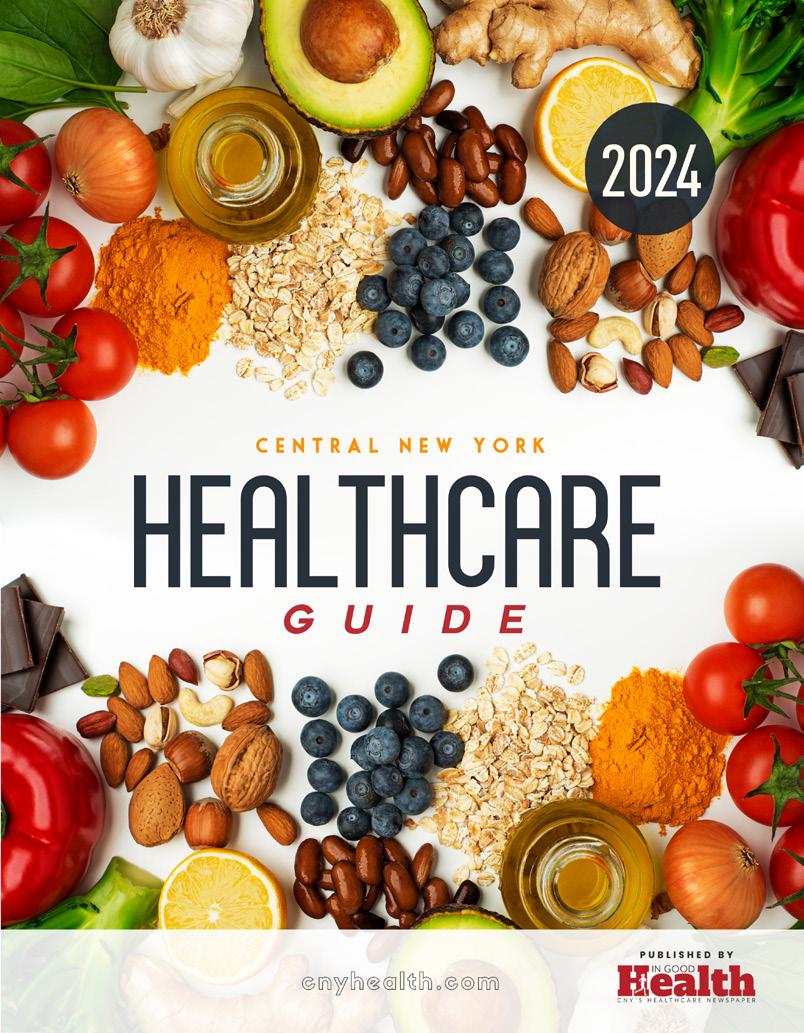
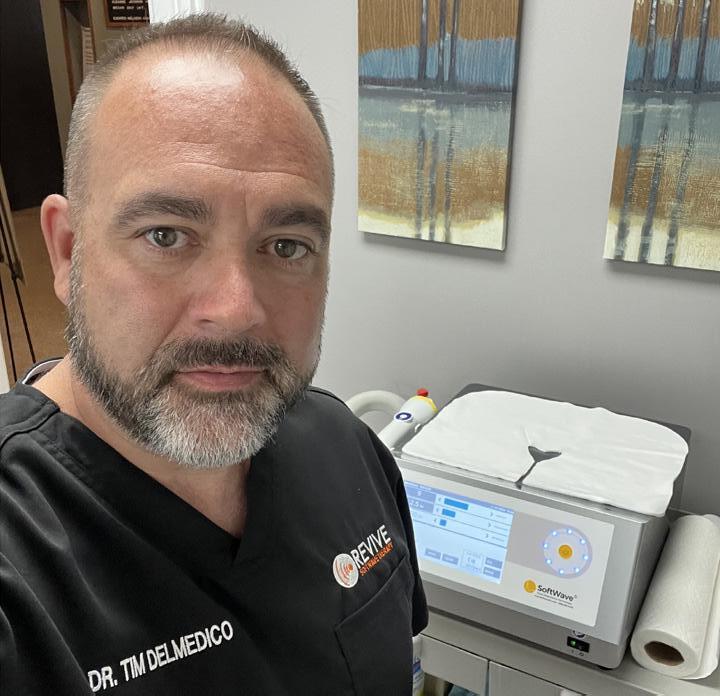
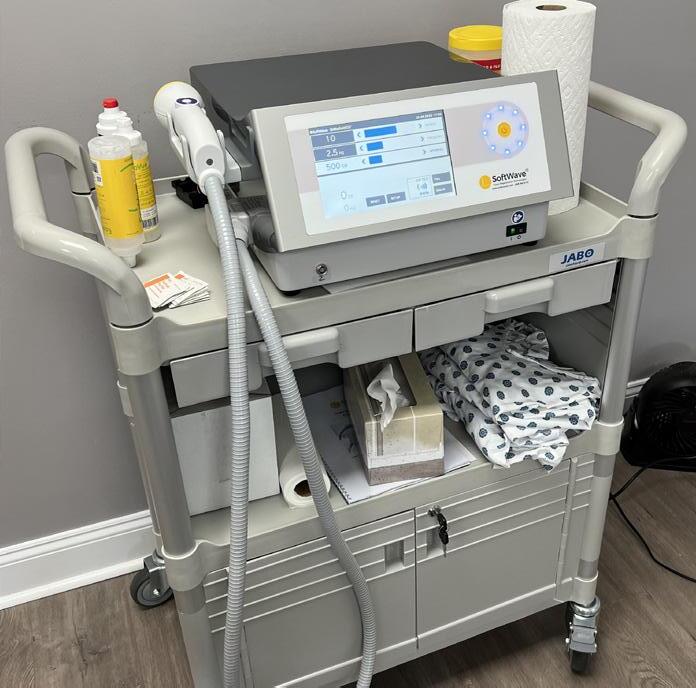

By Gwenn Voelckers
Thanksgiving is around the corner, marking the beginning of the holiday season — a time filled with food, family, joy and sometimes stress.
For many, it’s also a time of adjustment to a new way of living, especially if you’re newly on your own after a divorce or the loss of a spouse.
Maybe this is your first holiday season solo and you’re discovering that the freedom to make your own choices is both exhilarating and overwhelming.
One of the most critical lessons I’ve learned on this journey is that living alone successfully requires more than just setting the table for yourself — it requires the strength to set boundaries and say “no, thank you” when necessary.
Why is it so hard to set boundaries?
Setting boundaries, especially around the holidays, can feel incredibly challenging. I can remember not wanting to disappoint others, feeling guilty for saying no or worrying that people would think I was selfish.
Setting boundaries isn’t about being selfish; it’s about being selfaware. By saying no to certain things, you’re saying yes to your peace of mind, your health and your happiness.
You’re establishing healthier relationships by communicating your needs clearly and honestly. You’re guarding your heart and building self-respect.
The truth is, boundaries allow us to show up more fully in the relationships and activities that matter most. Without them, we spread ourselves too thin, risking burnout and
resentment.
So, this Thanksgiving, along with the turkey and pumpkin pie, let’s serve up a healthy helping of selfcare by learning how to say no when we need to.
The first time I said no to a party invitation that I didn’t feel like attending, I felt an odd mixture of guilt and relief. It wasn’t that I didn’t like the people throwing the party — I did. But the truth was, I just didn’t have the steam to go.
Here’s how I handled it: “Thank you so much for inviting me! I really appreciate being included and love spending time with you. However, I’m going to have to pass this time. I’ve been feeling overwhelmed lately and need to take some ‘me time’ to recharge my batteries. I look forward to connecting with you when life slows down.”
By expressing gratitude for the invitation and suggesting a future connection, I was able to decline in a way that felt comfortable and respectful.
Then there was the late-night request from a friend: “Can you pick me up from the airport?” The flight landed at 11:30 p.m. and while I used to be the kind of person who would bend over backward to help out, I realized that driving across town late at night was more than I was willing (or felt safe) to do.
My response? “I’d love to help, but I’m not comfortable driving that late in the evening. Can I help you
find a taxi or ride-sharing service?” By offering an alternative solution, I was still helpful without sacrificing my own comfort and safety.
Boundaries don’t just come into play with friends and family.
Sometimes, they’re necessary with neighbors or acquaintances. Like when my widowed neighbor started showing up at my house unannounced, asking for my opinions on fall cleanup and other light-hearted matters.
It was innocent at first — friendly chats, small favors — but then it started to feel uncomfortable.
One afternoon, he asked if I’d like to go to dinner. It took me by surprise and I told him, “I’m very flattered. Let me think about it.”
I knew I wasn’t interested in taking the relationship further and needed to set a boundary.
After going over several scenarios in my head, I finally arrived at what I wanted to say. With a kind smile, I simply said, “I’m sorry but I have to decline your very nice offer to take me to dinner. I value our friendship too much to do anything that might disrupt what we have. You’re a great friend and I like things just the way they are! I hope you understand.”
Yes, I was nervous, but I managed to keep my voice friendly and calm.
Thankfully, he nodded “OK” with a smile and I felt enormous relief as well as pride for setting a very challenging boundary.
Tip 4: Opting out of gift exchanges
Holidays often come with traditions that no longer feel right, like gift exchanges.
A good friend and I had exchanged gifts every year for decades. But last year, I realized it was beginning to feel more like an obligation than a joyful tradition.
I approached her with honesty: “I’ve loved our gift exchanges over the years, but I’m trying to simplify things this holiday season. How about we skip the gifts this year and just do something fun together instead?”
sive episode and 30% more likely to commit suicide today than they were 20 years ago,” according to a UCSF news release.
At the same time, the average U.S. tween spends 5.5 hours per day looking at a screen, the researchers said, and that rises to 8.5 hours for teenagers.
Could there be a link?
She was relieved! As it turned out, she’d been feeling the same way but hadn’t known how to bring it up.
Tip 5: Saying no to hosting a guest
Lastly, there’s the ever-persistent request from friends or family to stay at your place when they’re in town. For some people, it’s no problem, but for others, hosting can be overwhelming, especially during the holidays when life is already hectic.
When a family member asked to “crash” at my place for several days, I had to be honest.
“I’d love to see you, but I’m not able to host this time around. This holiday season will be a busy one for me this year with band rehearsals and concerts. I know I’m going to need my own space to relax, practice my music and prepare for our upcoming performances. Let me help you find a nearby hotel.”
It’s important to protect your space and energy, especially when you’re still adjusting to living alone.
Encouragement for the season
As we head into the holiday season, I want to remind you — and myself — that setting boundaries is an act of self-love.
So, as you set the table this Thanksgiving, remember that you’re also setting the table for your own well-being. Say yes to what fills your heart and brings you joy and say no, thank you, to the things that drain you. This holiday season, may you find peace, joy and the courage to prioritize yourself. Happy Thanksgiving!

Gwenn Voelckers is the author of “Alone and Content: Inspiring, empowering essays to help divorced and widowed women feel whole and complete on their own.” She welcomes your thoughts on this column as well as topic suggestion for future essays at gvoelckers@rochester. rr.com.
daily time spent staring at screens had a 10% higher odds for depression, a 7% higher risk for conduct issues, and a 6% higher risk for ADHD, compared to children with lower rates of screen use.
“The specific screen types with the greatest associations with depressive symptoms included video chat, texting, videos and video games,” Nagata and colleagues noted.
Astudy tracking almost 10,000 9- and 10-year olds for two years finds a link between time spent watching TV and other screens with a higher odds for ADHD and depression.
“Screen use may replace time spent engaging in physical activity, sleep, socializing in person and other behaviors that reduce depression and
anxiety,” said study lead author, physician Jason Nagata, of the University of California, San Francisco (UCSF). His team published its findings Oct. 7 in the journal BMC Public Health.
As Nagata’s group noted, mental health issues have been on the rise among adolescents.
“Adolescents are 50% more likely to experience a major depres-
To find out, Nagata’s team tracked data for 2016 through 2018 for 9,538 adolescents aged 9 and 10 enrolled in a major child brain development study. The children’s daily screen time and their rate of diagnoses for conduct disorders, depression, ADHD and other mental health issues were monitored.
The study couldn’t prove cause and effect, but the team did find small but significant associations.
“Higher total screen time was associated with all mental health symptoms,” the researchers reported.
Kids with the highest levels of
The effect also seemed stronger for white adolescents than for Black adolescents.
“For minority adolescents, screens and social media may play a different role, serving as important platforms to connect with peers who share similar backgrounds and experiences,” said Nagata, an associate professor of pediatrics at UCSF. “Rather than displacing in-person relationships, technology may help them expand their support networks beyond what’s accessible in their immediate environment.”
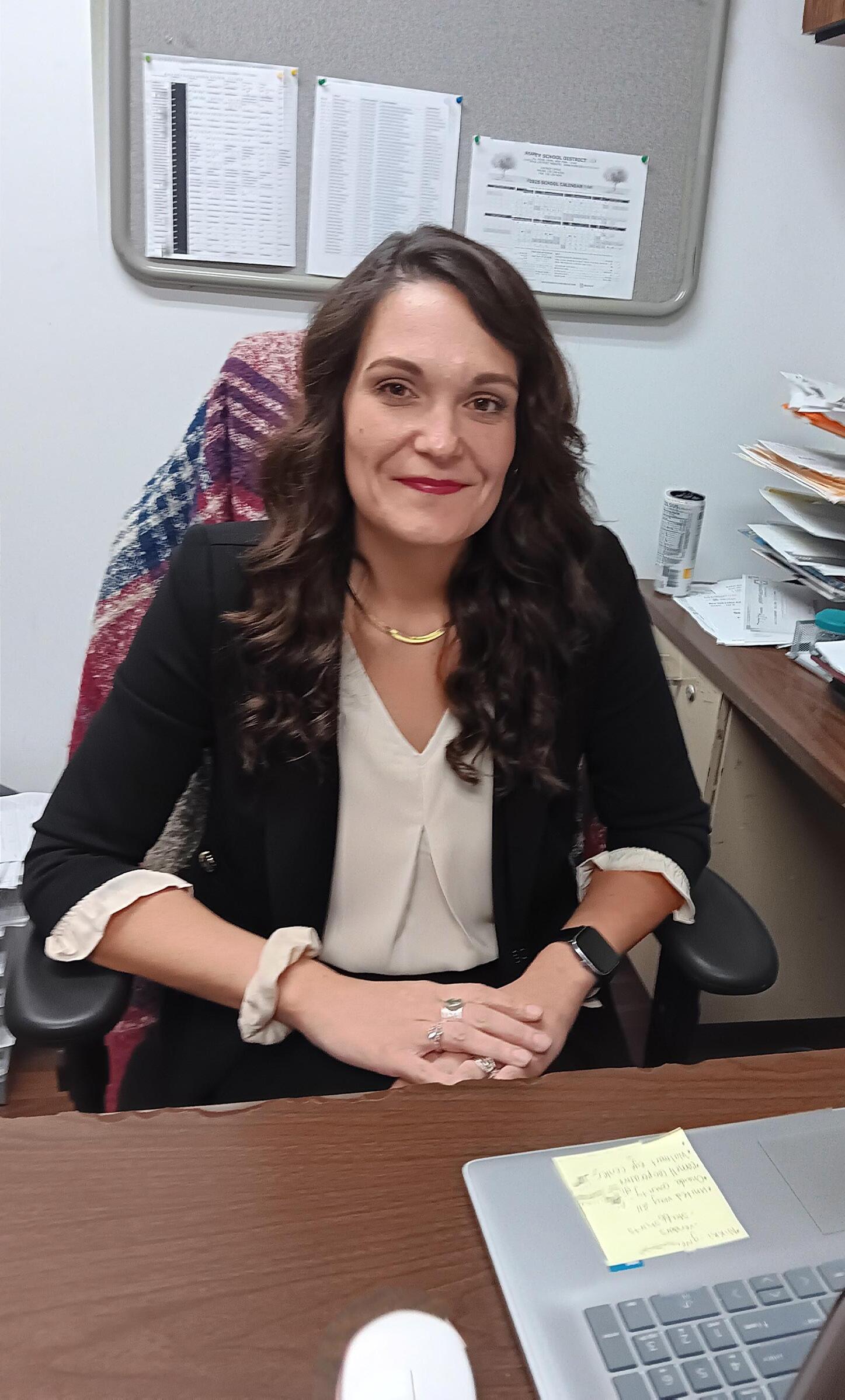
New YMCA of Rome branch director wants to see more family programming: ‘We are more than a gym and a swim,’ she says
By David L. Podos
Q: Does YMCA of Rome have any facility other than this in Rome?
A: Yes, we have two facilities — the one here in Rome and another facility in Oneida. Together we make up the YMCA of the Greater Tri Valley.
Q: You haven’t been in the position of branch executive director for too long. When did you officially start?
A: I officially started on Sept. 3. I am very humbled and excited to part of the YMCA and giving back to my community.
Q: Tell me about your educational background and places you worked before being hired at the YMCA.
A: Sure. I went to SUNY Plattsburg for my education where I earned a bachelor’s degree in environmental history. After graduating from SUNY Plattsburg, I decided to stay in that area. I was hired as a direct support specialist working with individuals with developmental
offer aikido classes [modern Japanese martial art] for 6-12 year olds. We have a very large aquatics program and while many of our members who are seniors take advantage of these programs, all ages participate. We offer a number of evidence-based programs for seniors which works in reducing the possibility of slips and falls which often times happens to our seniors. This is just a short list of what we offer and while these programs are popular and enjoyed by our members, we need to always be thinking of expansion of services — how we can best serve our members.
Q: Can you provide an example of what you envision as a new program?
A: I would really like to see more family programming. For example, a family fun run and making it multi-generational if possible. How about a family movie night, a family swim party or family craft events? These I believe would be great programs bringing families together for a great time. I even envision bringing in guest speakers with topics that are uplifting, concerts with local bands — I think these kinds of additional add-on programs will bring many people to the YMCA.
Q: Family is so important for so many reasons. By offering these family centered programs it has to be a good thing as it brings family members together to enjoy activities at an affordable cost and in a safe place. Do you see it that way?
A: Absolutely and I am committed to bringing these new programs and services to the community as soon as possible, hopefully before the end of this year or early next year.
Q: I heard that your organization might be purchasing a new building. What is going on with that?
A: I know that a lot of our members and the community have heard that we are not moving forward with a new building for the YMCA and that is true. With the increase of costs on just about everything we just felt it financially prudent to stay where we are and make improvements to our existing building.
Q: In July Rome was hit with a tornado that caused quite a lot of damage. How did the YMCA help out?
disabilities. Within one year, I was promoted to supervisor and since then have been in health care supervision for the past 13 years. I eventually relocated back to Rome. At that time, I was a multi-site manager for Well Now urgent care. A friend of mine who also lives in the Rome area reached out to me and said that the YMCA was looking to recruit a new branch executive director. I applied and the rest as they say is history.
Q: As the new branch executive director, what is your vision for the YMCA?
A: So, first off, my vision is to continue with our long-standing mission which is, that we continue to be an inclusive place for anyone, offering a safe place and programs that improve body, mind and spirit. I feel that there are many people who do not fully understand what the Rome YMCA offers. We are more than a gym and a swim. For instance, on Monday and Wednesday nights we
A: The YMCA is actually a shelter for disasters. Unfortunately, we lost power as well, so we were not able to help out in that aspect. But once we got our power back on, we provided showers for the community, we did fundraising. We also have a disaster relief fund and used that to help as many people as we could.
Q: How many staff do you have?
A: Organizational wide we have 220 staff. This would include our Oneida location and all our before and after school programs.
Q: Where does your funding come from?
A: The greater percentage of our funding comes from our membership fees. We also have a number of grants that supports us financially. A few of our programs are fee-for-service programs.
Q: If someone wanted to find out more about the YMCA, how to become a member and what other programs you offer, what number would they call and what website would they go to?
A: 315-336-3500. Our website is www.ymcatrivalley.org
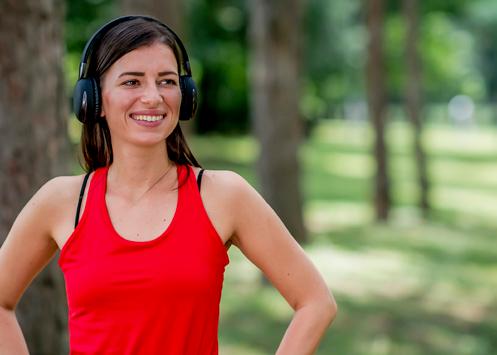

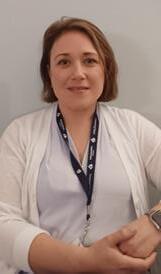

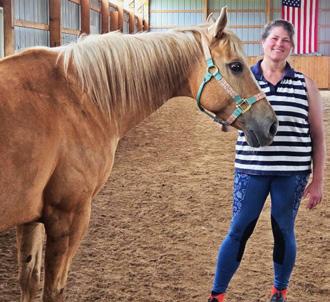






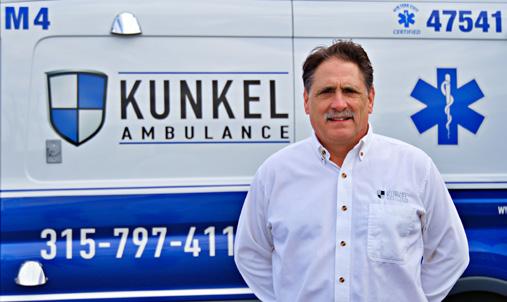





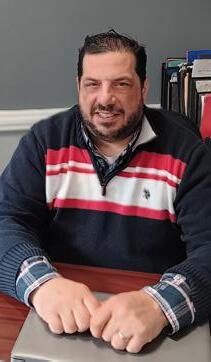




By Barbara Pierce
Communication difficulties between people and their doctors aren’t new. But people are saying more and more frequently that they feel like their health care providers are tuning them out and dismissing their concerns.
Much of that disconnect comes down to time pressures.
All health care providers are under great time pressures, which can make them feel rushed to find the quickest fix for their patients, rather than spending time to really find out what’s going on.
“Your relationship with your healthcare provider is a partnership,” said physician Lisa Harris, senior vice president and chief medical officer of Excellus BlueCross BlueShield.
“Your doctor will want to hear about your concerns and questions so they can make a diagnosis and recommendations and work with you on a plan,” Harris added.
If you suspect your provider isn’t listening to you, she suggests employing these strategies so that your appointment is as productive as possible.
Come prepared to your visit
Spend time preparing. Write down your concerns. This will help you better communicate with your provider, advised Harris.
Bring a list of your concerns and list the most important ones first.
Begin the conversation with “I have some concerns I’d like to share. Which ones can we address today?” and know that you may need to schedule a separate visit for other issues.
Medicare allows for up to 12 diagnoses to be listed per visit. However, only one condition is listed as the primary concern. That should be the most complex condition that is being addressed and the rest are listed as secondary diagnoses, said Harris. Prepare by rehearsing the way you’ll describe your symptoms to your doctor. What was going on when you first noticed the problem, when did it begin, how long each symptom last, what makes the problem better or worse.
If you have pain, be ready to rate the pain you’re experiencing on a scale of one to 10. Describe what the pain is like, whether it’s throbbing, stabbing, sharp or dull. What helps, what makes it worse. The more con-
One in 14 hospital patients may be the victim of damaging diagnostic mistakes, new research suggests.
The finding is from a study of 675 patients admitted to one large hospital in Boston at various periods between July 2019 and September 2021. The patients were randomly selected from more than 9,000 hospitalized during that time.
“The majority of [the diagnostic errors] were preventable,” a team led by physician Anuj Dalal of Brigham and Women’s Hospital in Boston con-

Physician Lisa Harris is the senior vice president and chief medical officer of Excellus BlueCross BlueShield. “Your relationship with your health care provider is a partnership,” she says.
cise and specific you are, the better the chances that what you’re saying will register with your doctor.
If you have a concern that you feel hasn’t been addressed, say so. Be specific about what you want answered, Harris advised.
For example, if you’re engaging in certain exercises to help with back pain, it would be important to mention whether the exercises are working or not. If the exercises aren’t helping the pain, your doctor will likely ask you additional questions, seeking more information to support your care. The doctor may ask how often you are doing the exercises and ask you to demonstrate them to ensure proper form.
Be open and honest, about what you’re experiencing. Don’t downplay your symptoms. Instead, describe them candidly — which is often challenging and uncomfortable. Your doctor might not be fully aware of how much you’re hurting or how much this symptom is impacting your life. Make sure he or she understands the magnitude of difficulties you’re having. That often leads to a better outcome than you would otherwise have.
Don’t
Yes, you have good reason to be angry at your health care provider when you feel you aren’t being heard, but your anger will only put him on the defensive and you won’t get what you need from him. Instead, if you show how much this symptom is hurting and harming your life, this can open the door to meaningful conversation and progress. If you blow up at your doctor, you’re probably not going to get anywhere.
Understanding the issues
You have the right to know which condition or issue your provider thinks you have, why you may have it and what to do about it, said Harris. If they don’t, ask these questions from the Institute for Healthcare Improvement’s Ask Me 3 educational program to better understand your health conditions and what you need to do to stay healthy:
• What is my main problem?
• What do I need to do?
• Why is it important for me to do this?
If you don’t understand something, don’t hesitate to ask. Say something like “Can you explain that in simpler terms?” Or: “Can you give me more details about that?” Ask questions that require a response. For example: What might have caused the problem I’m dealing with? What’s the diagnosis? (Knowing that will allow you to do your own research at home, which can help you feel more empowered.) What can we do about it?
When you get home, Google your symptoms.
Do your own research on the diagnosis. However, it is critically important to use only trusted websites, like the National Institutes for Health, CDC, Cleveland Clinic, Mayo Clinic.
You can always ask for a second opinion or referral to a specialist, said Harris. Allow your provider to guide you to that referral.
And don’t hesitate to find a new health care provider if the relationship just isn’t working.
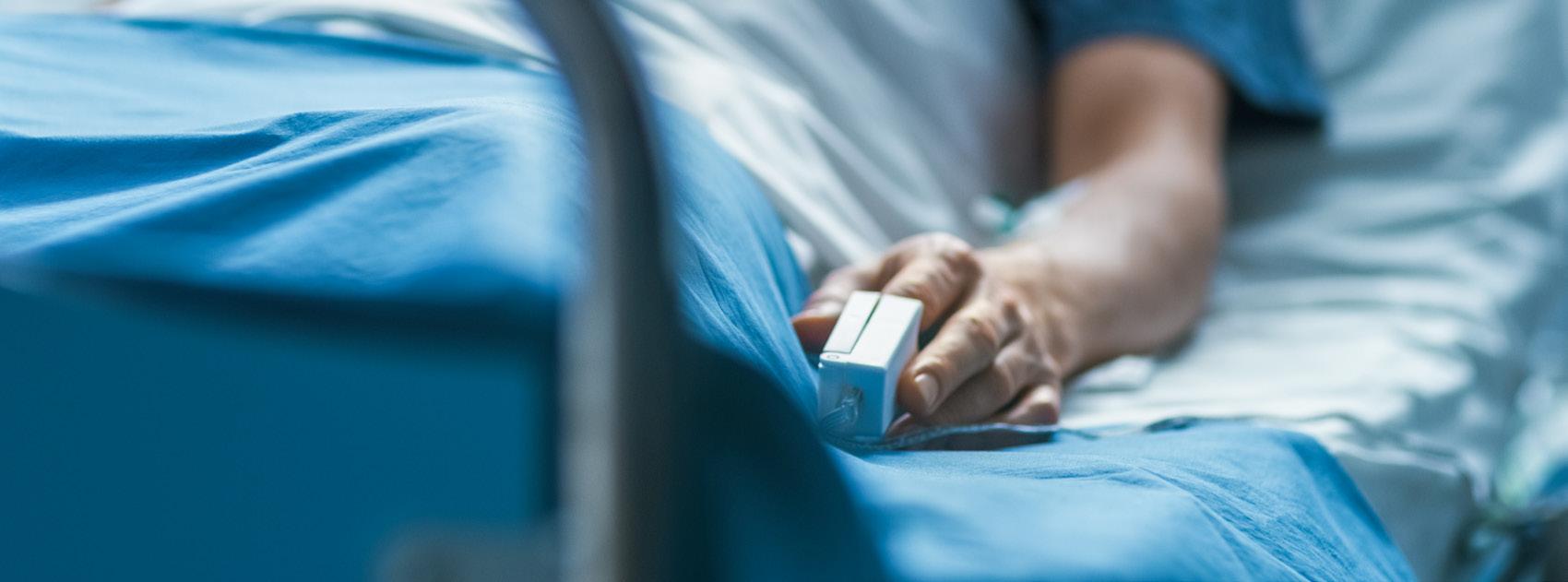
cluded in the study published online Oct. 1 in the journal BMJ Quality & Safety. Dalal is also an instructor in internal medicine at Harvard Medical School.
With 85% of the errors deemed preventable, researchers said their findings underscore the need for improved surveillance to avoid mistakes in the first place.
The most frequent errors involved cases of heart and kidney failure, sepsis, pneumonia, respiratory failure, altered mental state, belly pain and low blood oxygen levels.
Harm was classified as minor, moderate, severe and fatal, and researchers assessed whether the diagnostic error was a contributor.
In all, they identified diagnostic errors in 160 cases involving 154 patients. Fifty-two owed to complex medical issues; 54 resulted in transfer to the intensive care unit; and 34 patients died within 90 days.
Harmful errors occurred in 84 cases, resulting in 37 intensive care transfers and 18 deaths within 90 days, the study found.
Patients at highest risk of a
preventable error were older, white, non-Hispanic and those using public insurance.
Researchers emphasized that the findings were drawn from a single medical center, restricted to patients who had a stay under 21 days and relied on information from electronic health records, which may be inaccurate. Results should be interpreted with caution, they said in a journal news release.

An arthritis sufferer’s joints start to get ornery when the weather turns colder, getting stiff and achy as the mercury drops.
Cold weather doesn’t cause arthritis, but it can make it worse, experts say.
“Our joints operate best in temperate weather,” said physician Mariko Ishimori, interim director at the Cedars-Sinai Division of Rheumatology in Los Angeles. “When the
weather gets cooler, the synovial fluid that acts like motor oil in our joints becomes more like sludge.”
Frigid temperatures also can increase a person’s pain sensitivity, slow their blood circulation, and promote muscle spasms, the Arthritis Foundation says.
And if that weren’t enough, your joints detect and respond to changes in air pressure that accompany weather fronts.
“A drop in barometric pressure can cause muscles and tendons to expand, which can put more stress on an already crowded joint,” Ishimori said in a Cedars Sinai news release.
“When your joint cap expands, you can feel that.”
But there are some simple steps that people with arthritis can take to protect themselves against joint pain caused by cold weather, experts say.
• Stay warm. Wear hats, gloves
and scarves, and use heating pads and blankets to keep warm while napping. A hot bath also can soothe stiff joints.
• Get moving. Exercise can keep joints loose, boost energy and release a flood of feel-good hormones. Aim for at least 150 minutes of moderate-intensity exercise weekly, including two rounds of strength training.
• Stretch. Be sure to stretch your muscles regularly, especially prior to exercise. Roll the wrists and ankles, do some knee bends and stretch out the fingers and hands.
• Eat healthy. A good diet can help reduce inflammation and boost the immune system, as well as strengthening bones. Be sure to get enough omega-3 fatty acids, which reduce inflammation, as well as bone-strengthening vitamin D.
• Maintain a healthy weight. The more weight a person carries, the more pressure placed on bones, joints and tissues. Dropping some pounds can help reduce pain and stiffness.
• Tread carefully. A simple fall can cause lasting pain, and a person’s sense of balance can be altered by arthritis-damaged joints. Take your time while walking, and wear proper footwear.
These recommendations will vary between people. Ishimori recommends that each person explore how cold weather affects their joints, then pursue the lifestyle changes most apt to make them feel better.
“There’s a lot we can do to ease joint pain and stiffness,” Ishimori said. “You don’t need to suffer in silence.”
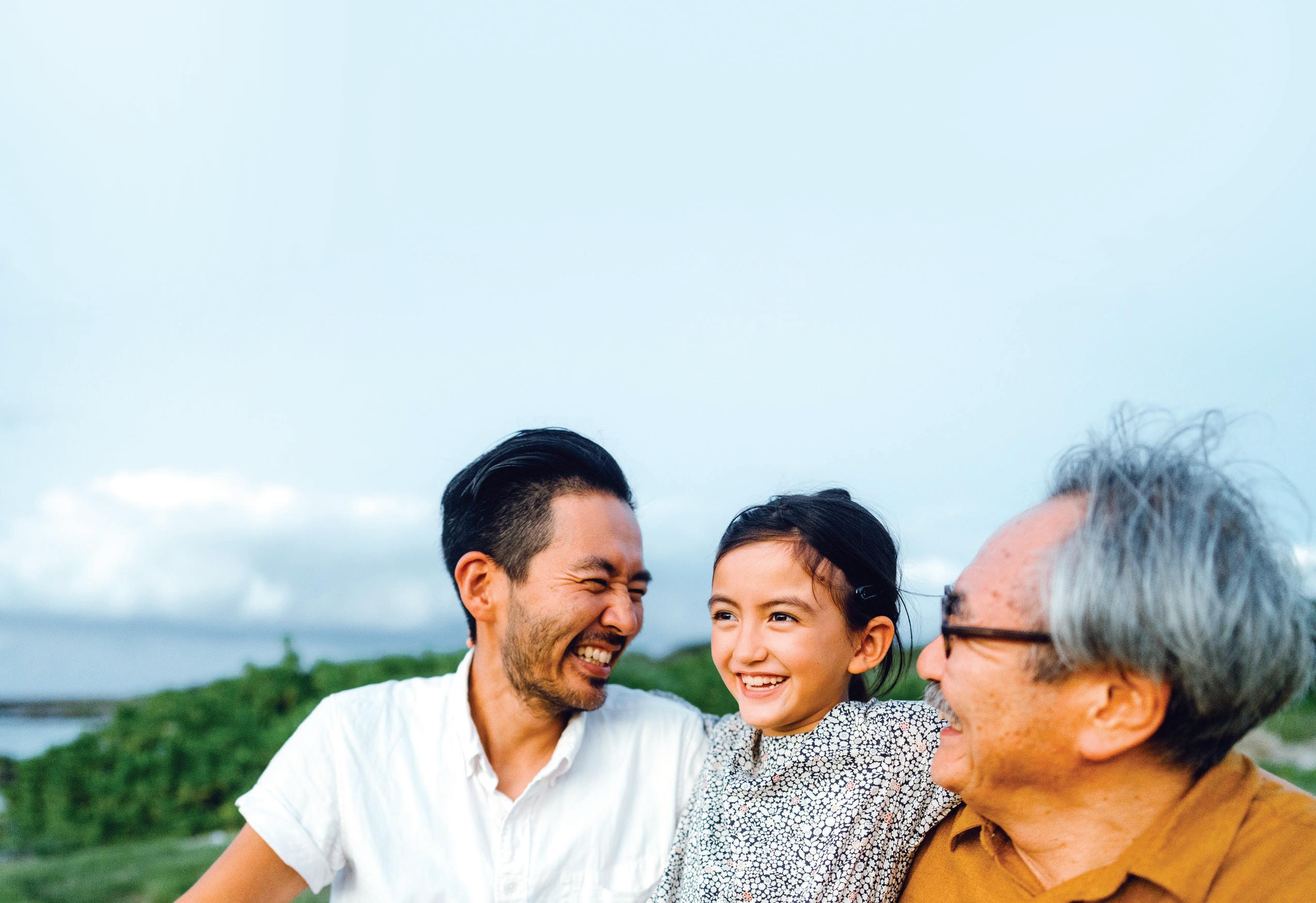
By Barbara Pierce
Antibiotics are powerful, lifesaving medications. Knowing when you need antibiotics and how to take them properly can help you benefit from these medications with the least risk.
Antibiotics come in several different forms, including tablets or capsules that you swallow or liquids that you drink, topical antibiotics that you apply to your skin, eyes or ears, and injections to treat serious infections.
Pharmacist David Jones is Mohawk Valley Health System’s’ pharmacy program director. He shared important things we should know about antibiotics: Antibiotics can be lifesavers — or life threatening.
What you need to know to keep them working for you, and not against you:
1:For what conditions are antibiotics effective?
A: “Nowadays, people have a better understanding of this,” said Jones. “Understanding of what to take antibiotics for. Ten to Fifteen years ago, doctors did overprescribe antibiotics — people wanted them for everything; parents wanted them whenever their kids were sick.
“Antibiotics are medications that fight bacterial infections. Bacteria are microscopic germs that live inside your body, on your skin and all around you. Most types of bacteria won’t hurt you. But certain bacteria can make you sick, with the effects ranging from a mild infection to a severe one that lands you in the hospital.
“An antibiotic refers to any substance that stops bacteria from
growing. Antibiotics work by killing bacteria or stopping them from multiplying. The antibiotics you take may be entirely made from natural products. Or, they may include synthetic [made in a lab] substances. Scientists are constantly researching and developing new antibiotics to fight infections.
“Examples of the types of bacterial infections that are killed by antibiotics include skin infections like cellulitis or staph infections, respiratory infections like strep throat or whooping cough, urinary tract infections, eye infections, Lyme disease.
“Antibiotics don’t work against viral infections like cold or flu. Antibiotics target bacteria, not viruses. So, they won’t work against conditions like the flu, a cold, bronchitis, or sinus infections.”
2:Are shorter periods of time taking the antibiotics as effective?
A: “Yes, shorter periods of time are better. You will optimize the treatment without the possible side effects. In the past, doctors treated infections for a long period of time. For instance, in years past, antibiotics were given for pneumonia for about two weeks; now the typical course is five days.”
3:When I feel better, can I save the rest for the next time I get sick?
A.: “It’s important to not stop early, said Jones. “You’ll feel better in 48 hours, but you do need to take it the seven to 10 days that your doctor has prescribed. If you stop early, you’re running the risk of reinfection,

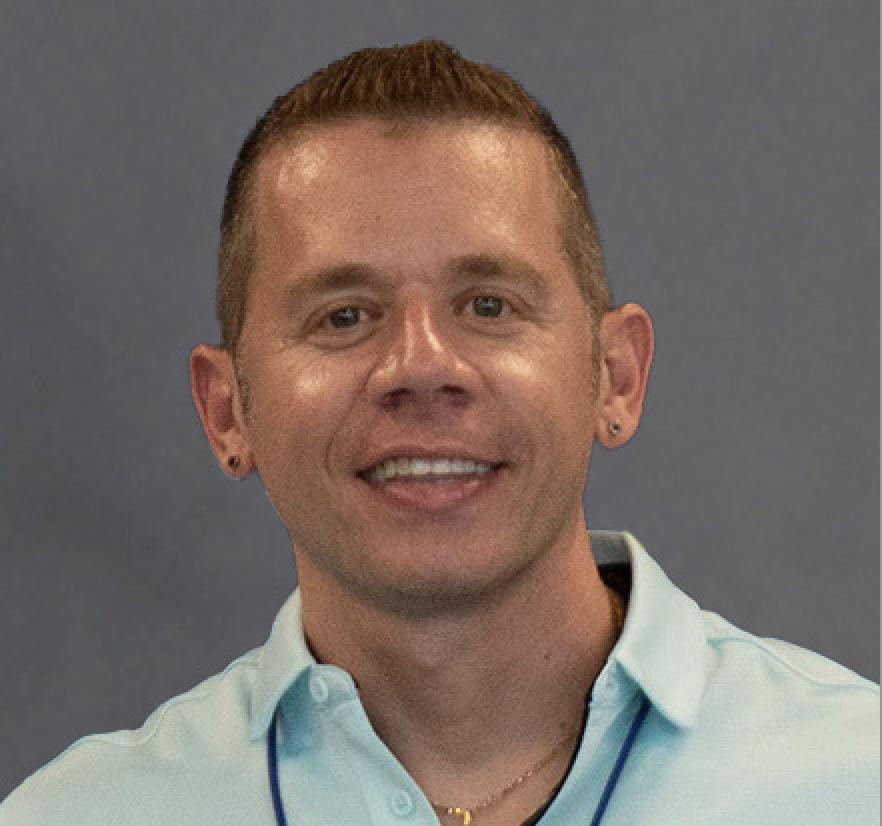
Pharmacist David Jones is Mohawk Valley Health System’s’ pharmacy program director. “You’ll feel better in 48 hours, but you do need to take it the seven to 10 days that your doctor has prescribed,” he says.
of not eradicating the bacteria.
“A lot of people do still hoard their antibiotics, he added. This is not okay. Also, don’t share your antibiotics with others. Don’t self-medicate. Talk with your doctor about any concerns.
“Take them exactly as your provider instructs. They’ll tell you the total course of your treatment (how many days you need to take the antibiotics). They’ll also tell you how many times per day you need to take them, and whether or not you should take them with food. Ask if anything is unclear.”
4:What about side effects or interaction with my other medications?
A.: “Yes, like any medication,
there are side effects with antibiotics, said Jones. Most side effects are GI related. (Gastrointestinal side effects are negative effects that affect the gastrointestinal system. They can include nausea and vomiting, diarrhea, constipation, flatulence, mucositis, loss of appetite, abdominal cramps, dyspepsia, peptic ulcer, and gastrointestinal bleeding.) Those you can fix with probiotics.
“Some people are allergic to some antibiotics. If the antibiotic is new to you, you won’t know if you’re allergic to it until you’ve taken it.
“A skin rash or a need to use sunscreen when outside are other common side effects of antibiotics.
“In terms of interaction with your other medication, or even food, every antibody is different. Some don’t work with thyroid medication, calcium, even some vitamins.”
5:If my health care provider prescribes a new antibiotic for me, what’s the best way to deal with my concerns?
A.: “Your pharmacist will talk with you; he or she will talk with you to make sure you understand, so that you don’t render this important treatment ineffective. So that you’ll have a good outcome.
“Improper use of antibiotics can cause bacteria to become resistant to antibiotics. Antibiotic-resistant infections are a global problem.”
Writer’s Note: The answers were slightly. edited for clarity and conciseness.
It’s never too late for a person to quit smoking, even if they’re elderly, a new study finds.
Dropping the smokes even as late as 75 can meaningfully increase a person’s life expectancy, researchers reported recently in the American Journal of Preventive Medicine.
Seniors age 75 will lose on average more than four years of life if they keep smoking, compared to people who never smoked, researchers found.
On the other hand, a 75-year-old smoker who quits has a 14% chance of gaining at least one extra year of life, and a 65-year-old smoker a 23% chance.
And about 8% of those who quit
at age 75 gain at least four years of life compared to those who keep smoking, researchers found.
Quitting smoking is the single best thing anyone at any age can do to increase their life expectancy, researchers concluded.
“We have seen a remarkable decline in young adult smoking over the past decade. However, rates among older adults who smoke have remained stagnant and, to our knowledge, no research had established the benefits for them of quitting,” lead researcher Thuy Le, an assistant research scientist with the University of Michigan School of Public Health.
“We wanted to show that stopping smoking is beneficial at any age
and provide an incentive for older people who smoke to quit,” Le added in a university news release.
For the study, researchers used data from health surveys, census records and U.S. death registers to construct life expectancy tables for three types of people -- those who never smoked, still smoke or quit smoking.
Results showed that quitting earlier in life kept people from losing additional years of expected life.
For example, people who keep smoking from age 35 will lose an average nine years of extra life, while those keep smoking past 45 will lose an average seven years of life.
But even into old age, quitting can help people avoid losing extra
years of life, results show.
Continuing to smoke after age 65 will cost a person about six years of life. Quitting at that age will add at least eight years of life for nearly 10% of people, researchers said.
“The cessation benefit is not limited to young and middle-aged adults who smoke; this study demonstrates its applicability to seniors as well,” said researcher Kenneth Warner, dean of the University of Michigan School of Public Health.
“While the gains from quitting at older ages may seem low in absolute values, they represent a large proportion of an individual’s remaining life expectancy,” Warner added.
Inever liked cauliflower as a kid.
Boiled to a tasteless mush, it made me gag.
If that wasn’t bad enough, it stunk up the entire house for hours with its clingy odor molecules that followed me to school.
Fast forward a few decades, and I can’t get enough of this nutritious stuff.
Why the change of heart?
I learned ways to prepare it that didn’t set off the stink alarm, and I realized its powerful health benefits.
Cauliflower, like other members of the cruciferous family (broccoli, cabbage, and Brussels sprouts), may help reduce the risk of heart disease and cancer, the two leading causes of death in the United States. Research has found a link between a high intake of cruciferous vegetables and a lowered risk of inflammation, high blood pressure and hardening of the arteries. Some evidence suggests that cauliflower may also slow the growth and spreading of certain cancer cells.
This year-round vegetable has been found to contribute to weight loss and obesity prevention. High in fiber (2 grams per cup) but low in calories (27 per cup), cauliflower can help you feel full faster and eat less. Studies show that a diet high in fiber-rich vegetables like cauliflower is important for digestive health and
may lower the risk of several chronic illnesses, including diabetes.
Surprisingly, pale cauliflower is rich in vitamins C and K, which work together to protect bones and joints from damage and prevent bone loss. Separately, immune-boosting vitamin C helps the body grow and repair tissues while vitamin K helps blood to clot as well as prevent the hardening of arteries that can contribute to heart disease.
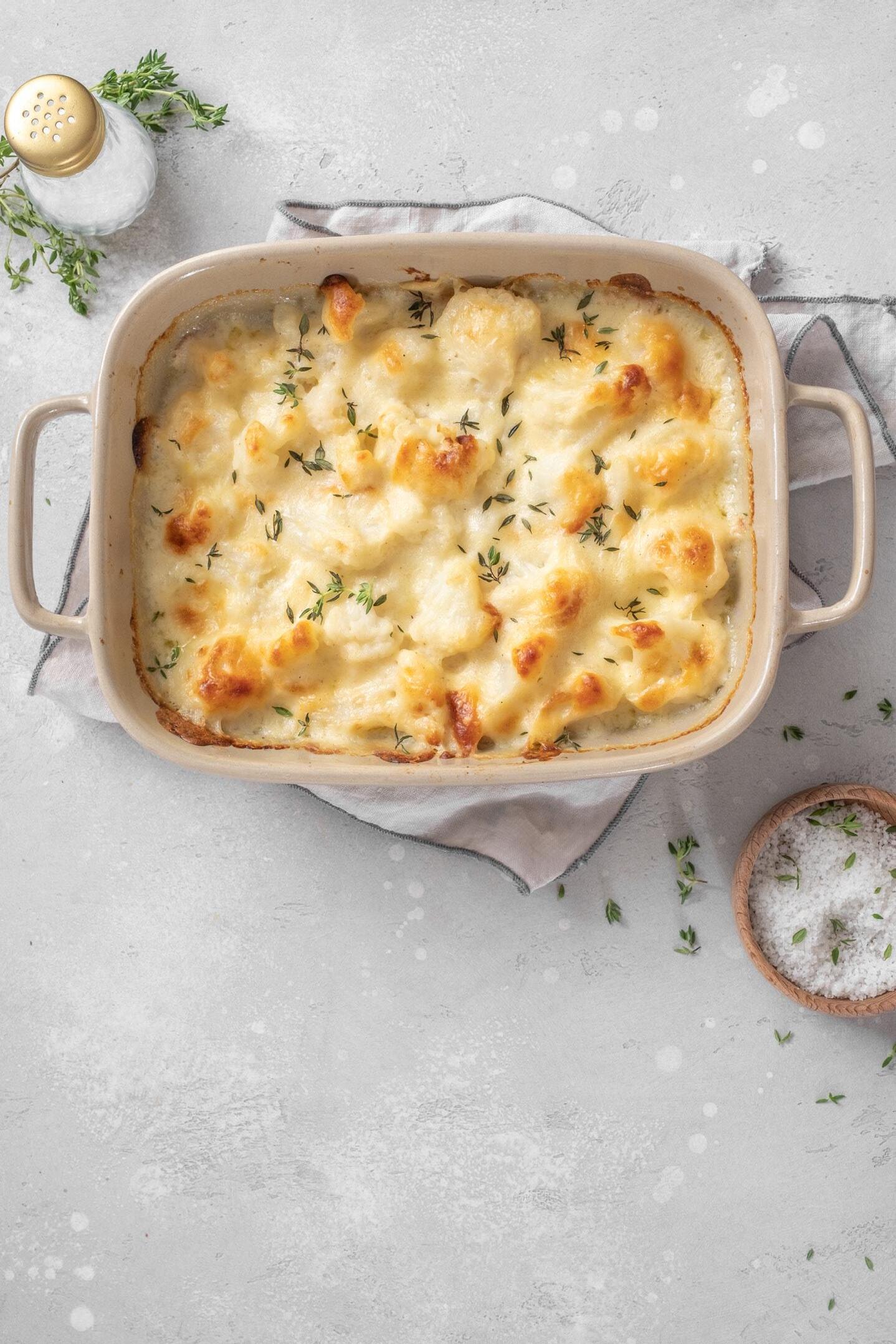
Similar to its cruciferous cousins, cauliflower is packed with an abundance of antioxidants that protect our cells from harmful free radicals and inflammation. These unique nutrients have been shown to reduce the risk of cancer and heart disease, slow age-related cognitive decline, and lower the risk of premature aging.
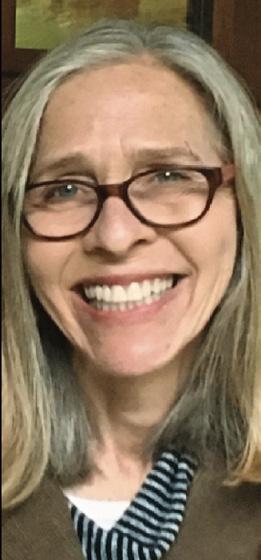
Anne Palumbo is a lifestyle columnist, food guru, and seasoned cook, who has perfected the art of preparing nutritious, calorie-conscious dishes. She is hungry for your questions and comments about SmartBites, so be in touch with Anne at avpalumbo@aol.com.
It’s called the MIND diet and its primary aim is to help guard against thinking and memory declines as you age. But does it work?
Yes, claims new research that found following the MIND diet for 10 years produced a small but significant decrease in the risk of developing thinking, memory and concentration problems.
“With the number of people with dementia increasing with the aging population, it’s critical to find changes that we can make to delay or slow down the development of cognitive problems,” lead study author, physician Russell Sawyer, an assistant professor of clinical neurol-
ogy and rehabilitation medicine at the University of Cincinnati’s Gardner Neuroscience Institute, said in a news release on the study. “We were especially interested to see whether diet affects the risk of cognitive impairment in both Black and white study participants.”
How does the diet work its magic?
The MIND (Mediterranean-DASH Intervention for Neurodegenerative Delay) diet joins elements of the Mediterranean diet and the DASH diet, which focuses on reducing blood pressure.
“Among the MIND diet components are 10 brain-healthy food
Select firm, heavy cauliflower heads with compact, cream-colored florets and few brown spots (a sign that the head is getting old). Unwashed cauliflower lasts about a week in the refrigerator; precut cauliflower florets should be consumed within one to two days. If cauliflower gives you gas, eat small amounts to begin. And if you’re prone to kidney stones, you might have to limit your intake of cauliflower, which is a high-oxalate food.
1 large head of cauliflower, cut into medium florets
4 tablespoons butter (or olive oil), divided ¼ cup yellow onion, chopped 2 cloves garlic, minced
3 tablespoons all-purpose flour
1 teaspoon salt
1. Preheat oven to 375 F.
2. Cook the cauliflower florets in a large pot of boiling salted water for 4-5 minutes, until tender but still firm. Drain, pat dry, and set aside.
3. Meanwhile, melt 2 tablespoons of the butter in a medium saucepan over medium heat. Add chopped onion and garlic and sauté until tender, about 3-4 minutes. Reduce heat to low; add flour, stirring constantly with a wooden spoon for 2 minutes. Pour the hot milk into the saucepan and stir until it comes to a boil, increasing heat if necessary. Boil, whisking constantly for 1 minute, or until thickened.
4. Off the heat, add salt,
groups — green leafy vegetables, other vegetables, nuts, berries, beans, whole grains, seafood, poultry, olive oil and wine,” Sawyer told CNN.
Meanwhile, five unhealthy food groups — red meats, butter and stick margarine, cheese, fried and fast foods, and pastries and sweets — are very limited in the MIND diet, Sawyer added.
“The MIND diet has all the key features — notably an emphasis on real food, mostly plants — required to reduce systemic inflammation, facilitate weight loss, improve the health of the microbiome, ameliorate insulin resistance, lower elevated blood lipids [fats], and slow atherogenesis [clogging of arteries],” physician David Katz, a specialist in preventive and lifestyle medicine
½ teaspoon coarse black pepper
1 teaspoon thyme or rosemary
2 cups 2% milk, hot
¾ cup shredded Gruyere cheese, divided
½ cup grated Parmesan
½ cup whole-wheat panko breadcrumbs
pepper, thyme or rosemary, ½ cup of the Gruyere and the Parmesan, mixing until fully melted and smooth.
5. Pour 1/3 of the sauce on the bottom of an 8-by-11 or 9-by13 inch baking dish. Place the drained cauliflower on top and then spread the rest of the sauce evenly over the top. Combine the breadcrumbs with the remaining ¼ cup Gruyere cheese and sprinkle on top. Melt the remaining 2 tablespoons butter and drizzle over the gratin (optional).
6. Bake for 25 to 30 minutes, until the top is browned. Broil for 2-3 minutes to brown the top more (watch carefully).
Note: Sharp cheddar can be substituted for Gruyere.
who founded the lifestyle as medicine nonprofit True Health Initiative, told CNN.
“That such effects would translate into protection of the brain is anything but a surprise,” Katz added. “This study of association does not, by itself, prove that the MIND diet protects cognitive health, but given the clear mechanisms in play, it certainly suggests it does.”
People who followed the MIND diet more closely were 4% less likely to develop memory and thinking problems than those who did not adhere to it, the study found. The finding held even after factoring in exercise, education, smoking, body mass index, medical conditions, age and anxiety or depression.

Living to 100 is not only possible. It’s also possible to maintain good health into three-digit age. Beyond the oft heralded “don’t smoke, eat right and exercise” and a lucky set of genetics, a few other factors play into healthy longevity.
Tips from Diana Modera, registered nurse, private nurse and certified health and wellness coach serving Central New York:
1 “Sleep is big. It controls the hormones for your satiety center. Lack of sleep makes you crave carbs and increases cortisol levels. Not sleeping is stress for your body and it increases your fat storage.
2 “Find out what the stressors are. For one person, it was a toxic relationship. Or it could be suppressed trauma. Sometimes, if I think someone is traumatized to the point where they can’t function, I refer them out to a psychologist or psychiatrists. They need help in working through things.
3 “Many people have a lack of activity. Walking releases endorphins and we need to exercise for 30 minutes a few times a week, plus strength training.



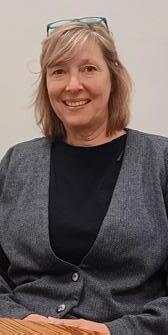
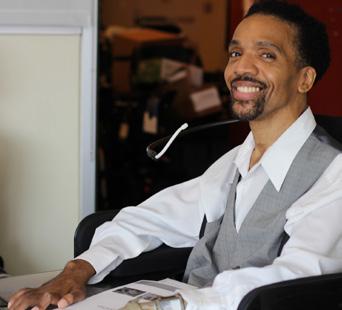
4. “Get out in the sunshine. It helps your body generate and absorb vitamin D. We don’t have much sunshine here in the Northeast, so supplementing is important for D. I believe you can get almost all that you need in your food. I’m not a big supplement person. Supplements aren’t FDA-approved. They can print anything they want on the bottle. I’d run this by a registered dietitian to get supplements.
5. “Hydration is very key. Your body is 60% water. You have to drink enough water.
6. “It’s not just about avoiding junk, but eating enough of the good stuff. I call my eating plan the ‘rainbow plate’ because 50% should be fruits and vegetables, 25% lean protein and 25% whole grain. You can be healthy if 80% to 90% of the time, you stick with what works. If you have a celebration, don’t feel guilty. Enjoy it.
7. “Eat more whole foods. Processed foods are what’s killing America.”
Tips from physician Sharon Brangman, faculty at SUNY Upstate Medical University, chairwoman of geriatric medicine and director of the Up-



The keys to healthy longevity are less obvious than you think
By Deborah Jeanne Sergeant
state Center of Excellence for Alzheimer’s Disease:
8. “You can be healthy and still have medical problems. The main thing we look for is someone who still has brain power and can get around for the most part. They might need a little help. It doesn’t mean you age without a medical problem.
9. “Everyone needs social engagement. Find something that has meaning and you find has value. So many older people feel marginalized and that they’re no longer contributing.
10 “Find something that you can do with others. Find something you want to learn more about, especially if it involves other people. We learned during the pandemic that people by themselves had increased risk of dementia and overall increase in diseases. Maintain that social engagement. It’s so important. It can be harder as you get older and friends die and family lives far away. Look to senior centers and other programs.”
Tips from geriatrician Ahmed Rab, affiliated with Rochester Regional Health:
11 “Have a purpose. Engage in lifelong learning. People with pur-
pose have less dementia. Acquiring new skills supports brain health.
12 “Another thing that resonates well is being as functional as possible and keeping their minds sharp.
13 “Focus on cognitive fitness. Puzzles, reading and learning new languages can prevent cognitive decline. Those who stay mentally and physically active have lower risk of cognitive decline.
14 “Maintaining a safe home environment is extremely important. When people have falls and fractures, it sets them back in their ability to live independently at home. Add grab bars, add lighting, make sure the floor is clutter-free and avoid rugs that raise fall risk.
15 “Embrace technology. I have patients who order on Amazon at age 100.
16 “Get depression screenings and get help. As we get older, we lose a spouse. They maybe had experiences with war and kept their feelings buckled in. A lot of my patients are living in senior communities where they have others who have experienced these things. That can help.
17 “Take your medications. As we get older, remembering what to take is hard. We need reminders. I have a couple patients who have alarms go off at certain times so they can stay independent.”


New research shows that the dramatic increases in life expectancy seen during the 19th and 20th centuries have slowed
So much for the idea that most people born today will live 100 years or more.
New research shows that the dramatic increases in life expectancy seen during the 19th and 20th centuries have slowed considerably.
In the world’s longest-living populations, life expectancy at birth has risen just 6.5 years, on average, since 1990, after nearly doubling over the 20th century as a result of advances in preventing disease.
Humans appear to be hitting a biological limit to life, the evidence suggests.
“Most people alive today at older ages are living on time that was
manufactured by medicine,” said lead author S. Jay Olshansky, of the University of Illinois Chicago School of Public Health. “But these medical Band-Aids are producing fewer years of life even though they’re occurring at an accelerated pace, implying that the period of rapid increases in life expectancy is now documented to be over.”
A child born in the United States today can expect to live to 77.5 years. A baby girl has a lifespan of 80.2 years and a boy, 74.8, according to the National Center for Health Statistics.
Olshansky has been studying life expectancy for decades. He pub-
lished a paper in the journal Science in 1990 that said that people were approaching a ceiling for life expectancy at about 85. Others disagreed, forecasting that advances in health care would lead to further gains.
The new study — published Oct. 7 in the journal Nature Aging — forecasts that gains in life expectancy will continue to slow as more people experience the unyielding effects of aging.
It looked at data from Hong Kong and eight countries where life expectancy is the highest and at the United States, one of a few countries where life expectancy dropped during the period studied.
“Our result overturns the conventional wisdom that the natural longevity endowment for our species is somewhere on the horizon ahead of us — a life expectancy beyond where we are today,” Olshansky said in a university news release. “Instead it’s behind us — somewhere in the 30- to 60-year range. We’ve now proven that modern medicine is yielding incrementally smaller improvements in longevity even though medical advances are occurring at
breakneck speed.”
Even though more people may live to 100, they’ll be the exception, he said. That’s just the opposite of thinking among insurers and wealth-management firms, who make calculations based on the assumption that most people will live to be 100.
“This is profoundly bad advice,” Olshansky said.
While the study notes that science and medicine may produce further benefits, efforts to improve quality of life rather than extending it may make more sense. Researchers called for investment in geroscience, the biology of aging, arguing that it may be key to the next wave of health and life extension.
“This is a glass ceiling, not a brick wall,” Olshansky noted.
Reducing risk factors, working to eliminate disparities and encouraging people to embrace healthier lifestyles can enable people to live longer and healthier, he said.
“We can push through the glass health and longevity ceiling with geroscience and efforts to slow the effects of aging,” he added.

Suzana Sukunda worked in several homecare companies — until she decided to open her own. ‘We specialize in care and daily living assistance to an array of individuals,’ she says
By Stefan Yablonski
Anew, large study from France underscores the link between adult hearing loss and dementia.
“Given the major burden of cognitive decline and the absence of curative treatment, identifying modifiable risk factors is of importance,” a team led by physican Baptiste Grenier, of the Université Paris Cité, wrote Oct. 1 in the journal JAMA Network Open.
They said thinking skills may decline not only because people with hearing loss become socially isolated but also because they go for a long periods without auditory input.
In addition, hearing loss is linked to loss of volume in critical areas of the brain.
Even so, researchers said hearing aids for patients with disabling hearing loss should be prescribed based
After working for other home care agencies, Suzana Sukunda decided to start her own.
“I started the business from scratch; have been in business since 2018,” said Sukunda 34, owner and operator. “I’ve been doing this since I was 18. I worked for other agencies before I opened up my own.”
Homecare Your Way LLC is BBB accredited, she said.
“It was tough to get going. I was facing competition from all the other agencies,” she said. “I was new, didn’t really know what I was doing. I opened up in 2018, but it didn’t really pick up for me until after COVID. I had a very hard time to start.”
She really didn’t like the way some other agencies ran things, she said.
“That’s why I opted to open up my own,” Sukunda said. “My staff, right now, is about 20 employees. The clients are about 15 or so. We see them every week.”
They have 11-50 employees, depending on the need, she added. They go in the clients’ homes — offer 24-hour care, seven days a week.
“We assist seniors with everyday living in their homes. Basically, we provide companion services. We provide transportation to and from doctor appointments as well as other services. We provide one-on-one attention and care,” she said. “Things like running errands, helping with a client’s mail and grooming assistance.”
They take the time to get to know the clients and develop individualized care plans that fits their specific needs, she added.
However, no one care plan fits everybody, she explained.
“Daily services can include anything from meal preparation, hygiene and supervision,” she explained. “We also do grocery shopping, meal prep, light housekeeping — things like that if they can’t do it on their own.”
Skilled nursing care service is available for Alzheimer’s, dementia and Parkinson’s care.
Homecare Your Way employs CNAs, home health aides, companions. The specific staff member gets assigned according to the client’s needs.
“It all depends on the client. If it’s only companionship, we go a few times a week — just checking up on them — you don’t have to be certified, you’re just a companion,” she said. “But if it is a little bit more hands-on, the staff member needs to be certified. But right at the moment we don’t have any hands-on cases. All my [people] are pretty independent; they just need a little assistance, companionship.”
Sukunda goes to homes as well.
“I do the bookkeeping and all that stuff myself. It’s a lot, but it’s what I worked for when I was younger. Empowering independence is our goal,” she said.
“Every client is different. Some need 24-hour care; they may be starting early Alzheimer’s. Some don’t have any family locally, so we look over them. Others just need a few hours a day,” she continued. “Some just want some companionship, so we just kind of check in on them. It all depends on the individual client’s needs.
“We specialize in care and daily living assistance to an array of individuals. Whether someone needs daily or weekly assistance due to aging, illness, recovery or rehabilitation our care givers provide individualized service.”
To contact Homecare Your Way LLC, call 315-542-2068. The business is located at 3985 Oneida St. Suite 103 in New Hartford. For more information, visit www.homecareyourwayllc. com.
on potential benefit to quality of life and not to ease cognitive decline. For that, they wrote, more research is needed.
For the study, Grenier’s team analyzed data from more than 62,000 people in France (average age 57) recruited between January 2012 and December 2020. Participants aged 45 and older underwent cognitive testing at the outset.
In all, 49% had normal hearing; 38% had mild hearing loss; and 10% had disabling hearing loss but did not use a hearing aid; 3% wore a hearing aid.
Participants took both hearing and cognitive tests.
In all, 27% of participants with mild hearing loss and 37% with disabling hearing loss had cognitive scores indicative of impairment. That compared to 16% of participants
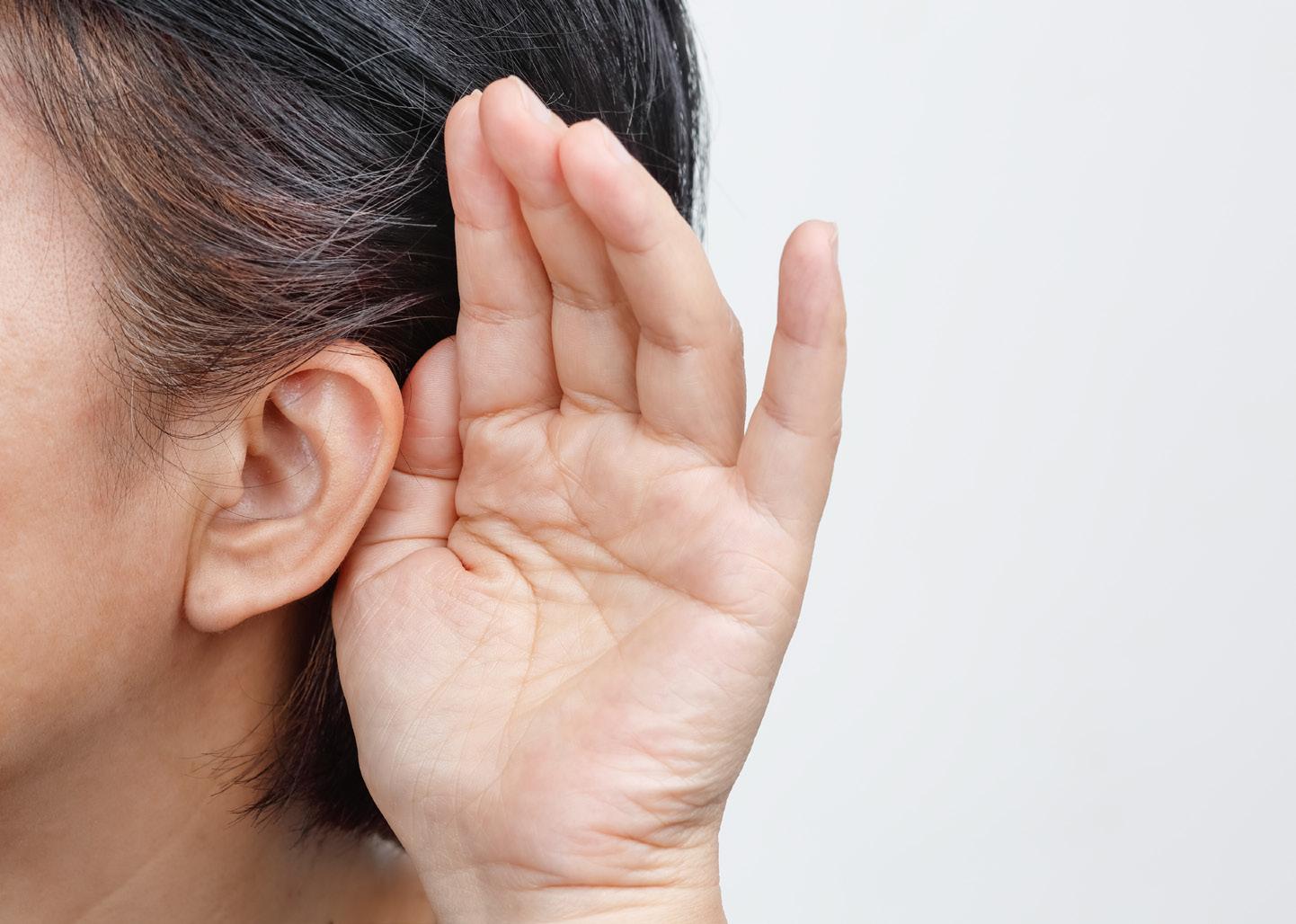
whose hearing was normal. Researchers found no meaningful difference in the risk of cognitive impairment between individuals with disabling hearing loss who wore a hearing aid and those who did not.
A related analysis suggested that hearing aids may reduce the risk of cognitive impairment in people who have disabling hearing loss as well as depression.
By Barbara Pierce

Two a.m. I walked from the dark night into the bright lights of a hospital’s emergency room. Walked very slowly and cautiously as each step sent a jolt of severe shooting back pain. It had been getting worse over the past few days and I couldn’t tolerate it anymore.
Thankfully there was no one waiting. The nurse took me back to a bed and started an IV.
A few hours later I went home, happily pain free.
But that wasn’t going to last. The pain came back with a vengeance a few days later.
I had identified it as a 10 when I was there before, 10 being the worst pain I’ve ever had. But I was so wrong. Now it was twice as bad. Back to the ER.
This time whatever they gave me worked only partially. Twenty minutes after getting home, the pain
was full-on intolerable. I talked with the ER doctor on the phone who told me what to take.
To get to the bottom line, I’ve been dealing with severe pain for a few weeks now. My life is on hold. All I can do is lie in a recliner with an ice pack on my back. My articles are waiting to be written, my life is waiting for me.
This is what happens when you’re aging.
Out of the blue, you go from being just fine to being incapacitated. Life can change in the flicker of an eye. You no longer have the life you had.
Aging means you run head-on into the unexpected. Time and time again.
“Ninety percent of our training is preparing for the unexpected,” said astronaut Butch Wilmore, on the news recently because he and his

fellow astronaut were stranded on a space station somewhere out there, way beyond earth. Their year didn’t turn out as they expected. They thought they’d be returning home just eight days after they started. Now it’s next year.
“Sometimes the unexpected goes beyond what you even think could happen,” he continued. “And that’s just the way it goes sometimes because we’re pushing the edges of the envelope in everything that we do and it’s not easy.”
That’s a pretty good description of aging. The unexpected goes way beyond what you’ve ever imagined. And most of it’s not easy. Nobody trains you to prepare for the unexpected; there are far too many possibilities.
I could go through a long list of my friends and the totally unexpected things they’re facing. One after another has found their life is going in a direction they never would have imagined. If you’re older or you have older friends, you know how that works. And yes, it is depressing to think about. Most of my friends say “I didn’t plan for my life to be like this!”
Here are three lessons I’m learning:
1. Don’t fight the pain. I’ve found my pain is more tolerable if I just accept that it is happening, instead of fighting it to go away or feeling sorry for myself that I’m going through this.
Sometimes, I find Buddhist teachings helpful. Human life is inherently painful, said the Buddha. There is nothing we can do about that, however much we might dislike it. “Pain is inevitable; suffering is optional,” he said.
Buddha used the metaphor of a first and second arrow to explain this to his followers. When we feel pain, it’s as if we are hit by an arrow — this hurts, of course. Adding mental
pain (aversion, displeasure, depression or self-pity) to physical pain is like being hit by a second arrow. The wise person stops with the first arrow. Simply by calling the pain by its true name, one can keep it from extending beyond the physical and thereby stop it from inflicting deep and penetrating wounds upon the spirit.
Instead of allowing your mind to be dragged down by the pain, simply observe the pain. Accept it.
2. Ask for help: It’s OK to ask for help when you need it. This is difficult for me, but I’m learning.
3. Work out what you can control: Focus on what you can control in the situation. Make a plan; having a plan can help you feel like you’re taking some control of the situation. Do your best to alleviate what is going on with you. Do what you have to do to change the situation.
When you’ve done all you can, do or, if there’s nothing else you can do, then step back and accept this new reality.
“When it is dark enough, you can see the stars,” says an old Persian proverb.
“If all you can do is crawl, start crawling,” said 13th century poet Rumi.
Some days are like that when you’re aging.
MP Order Proposal#

Barbara Pierce is a retired licensed clinical social worker with many years of experience helping people. If you would like to purchase a copy of her book, “When You Come to the Edge: Aging” or if you have questions for her, contact her at barbarapierce06@yahoo.com.






By Jim Miller
For those whose aren’t familiar, obstructive sleep apnea (OSA) causes your breathing to pause during sleep because something blocks your airway, like your tongue or relaxed throat muscles. Losing weight, quitting smoking and limiting alcohol can all help ease obstructive sleep apnea symptoms such as snoring.
The primary treatment for people with moderate or severe OSA is a continuous positive airway pressure (CPAP) machine, which keeps your airway open by pumping air through a mask you wear over your mouth or nose when you sleep.
But many people have difficulty tolerating CPAP and don’t stick with it. But CPAP machines have become smaller and quieter, with more comfortable options available. And for some people with mild to moderate OSA, less invasive alternatives to CPAP may be worth considering.
Here are several to ask your doctor about.
• Dental device: This is designed to move the jaw so that the tongue shifts toward the front of the mouth to help keep the airway open. It’s one of the primary alternatives to CPAP
and can also be used with CPAP to help make severe obstructive sleep apnea milder.
A dentist who specializes in sleep medicine (find one at dentalsleep. org) will be able to customize its fit to help your breathing without causing harm to your bite or teeth. These custom-made oral appliances can cost between $2,000 and $4,000 but may be covered by insurance.
There are much cheaper options available online to treat snoring, but experts say these may not help with OSA, and could move teeth out of place or cause jaw issues if they’re not properly fitted.
• Position therapy: For some, sleeping on the back can make obstructive sleep apnea dramatically worse. In these cases, switching to side sleeping — perhaps using pillows or a tennis ball attached to a shirt back — can sometimes help.
• Tongue trainer: In 2021, the Food and Drug Administration approved a tongue-stimulating device for mild sleep apnea called eXciteOSA (exciteosa.com), which people wear for 20 minutes a day for six weeks and then 20 minutes a couple of times a week indefinitely. It costs $1,650 and is not
By Deborah Dittner
Healthy aging is determined by a variety of factors.
One of the most important factors is eating a nutrient dense diet.
Whole nutrient dense foods help in building strong bones to “hold up” your body (along with muscle, tendons and more) and aid in balance.
Nutrients necessary from vitamins and minerals, beginning in childhood, consist of calcium, vitamin D, and magnesium.
• Calcium can be found in dark green leafy vegetables, beans, canned fish and dairy.
• Vitamin D is the sunshine vitamin and can also be found in eggs, salmon and other fatty fish. If your vitamin D levels (measured in a blood test) are low, your health care provider may also recommend a vitamin D supplement. When taking a vitamin D supplement, be sure to take it with a meal or fat as this helps to increase the absorption.
• Magnesium can be found in dark green leafy vegetables, fatty fish, nuts and seeds. By eating a variety of vegetables, fruits, whole grains, healthy fats and proteins will provide the body with the necessaries to help you age gracefully and with balance.
Balance helps to protect you in many ways. As people age, you often hear of an increase in falls occurring.
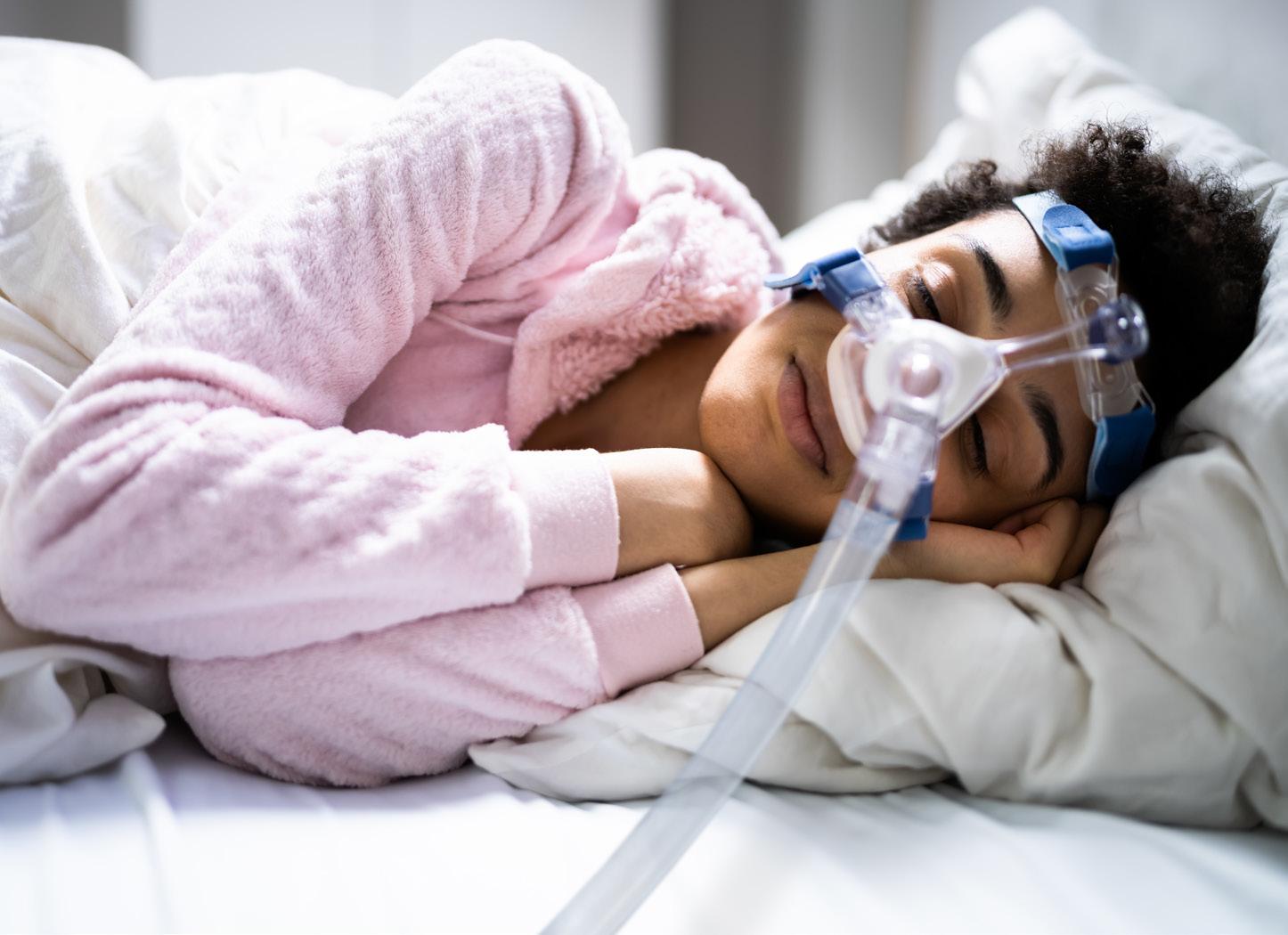
covered by insurance.
• Surgery: Those who can’t tolerate CPAP could have upper airway surgery to reduce the size of their soft palate or other tissue in their throat. But such options don’t always work, have serious potential complications, and cannot be reversed. So, in general, they should not be first-line treatments.
• Inspire: A newer option is a surgically implanted device called Inspire (inspiresleep.com). Approved in 2014, it stimulates a nerve that moves your tongue to keep your airway open. Inspire can be removed if it is not tolerated, but it should also
be tried only if someone is unable to use CPAP, and it is not an option for everyone.
Drug therapy
A new study, recently published in the New England Journal of Medicine, found that tirzepatide –the main ingredient found in Type 2 diabetes medication Mounjaro and weight loss treatment Zepbound –helps reduce symptom severity by almost two-thirds in adults with obesity and obstructive sleep apnea. Ask your doctor about this option.
Balance occurs when you walk, get out of a chair, get out of the shower, take the stairs, for example.
Injuries resulting from a fall can then add injury to your mental health such as depression especially if the fall has caused the decline in your day-to-day activities. By working on your balance, you will help in the prevention of falls and also benefit your mind by concentrating on what you need to do in order to balance.
Many activities help to improve balance.
Senior centers and rehabilitation centers will often offer classes in yoga (including chair yoga), Pilates, tai chi and dance. Other simple activities such as playing with grandchildren in throwing and catching the ball, or a walk to the playground also involves balance.
Tree pose (yoga) is excellent for balance — but be patient with yourself.
First, start by
standing on one leg with the other resting at your ankle. Once you can do this with ease for 10 seconds, increase the time to 30 seconds and progress from there. From the ankle position, progress to your calf and finally to your inner thigh.
I often suggest doing tree pose while brushing your teeth — one side in the morning and the other side before bed. Again…be patient with yourself. Balance will improve.
Movement at the kitchen counter can also aid in balance. Moves such as toe raises, heel raises, knee lifts (march), small squats, leg kickbacks, side- kicks alternating sides followed by a side lunge when balance has improved, alternating curtsy squats, hip circles (both directions), and toe taps (front to side to back to neutral) are great possibilities.

Maintaining or developing good posture builds strength to maintain balance. Avoid sitting for long periods of time. If you work on a computer, be sure to get up,
stretch and walk about every 15-30 minutes, if possible.
Think of walking while balancing a book on your head. Movement helps with proper alignment and balancing the body. Consider arm raises (straight up overhead then down to sides), overhead arm lift (goal post position to straight up), and shoulder rotation (goal post position to parallel) to improve posture. If able, add weights to increase strength.
Social connections aid in balance in another way. Taking a walk (brisk if possible) with a dear friend while conversing about family, pets, and activities causes the brain to work in a way to improve overall health including memory. Balance in body, mind and spirit will aid in healthy aging and overall balance.
The information provided is for educational purposes only and is in no way intended to replace the advice of your healthcare professional or any information contained on or in any product label or packaging.

as many individuals as possible through nutrition and lifestyle changes. www. debdittner.com
By Jim Miller
Dear Savvy Senior,
I would like to arrange a simple cremation that doesn’t cost me, or my family, a lot of money. Can you offer any tips that can help me with this?
Still Kicking
If you’re looking for a simple and affordable way to go, cremation is an excellent choice, and one that’s become exceedingly popular in the United States. About 60 percent of Americans are now choosing cremation over a traditional burial, versus only around 20 percent in the mid1990s.
Why the big shift? Price is a key reason. A basic cremation can cost as little as $700 to $1,200, depending on your location and provider, versus $7,500 or more for a traditional funeral and cemetery burial. Geography is another factor, as many families are spread across the country, making future gravesite visits less common. Here are a few tips to help you arrange your cremation and ensure you get a good deal.
You can arrange a cremation through a funeral home or a cremation-only business, but it’s wise to shop around because prices vary widely. It’s not unusual for one funeral home to charge $1,000, while another charges $4,000 or more for the same service.
Call five or six funeral homes or cremation-only businesses in your area and ask them how much they charge for a “direct cremation,” which is the most affordable option there is. With direct cremation, there’s no embalming, viewing or memorial service. It only includes the essentials: transportation of the body; required paperwork such as death certificates; the cremation itself; and return of the ashes to the family, usually within a week.
If you want a viewing, memorial service or anything beyond what a direct cremation provides, ask the funeral home for an itemized price list so you know exactly what you’re paying for. All funeral providers are required by law to provide this.
To locate nearby funeral homes, Google “cremation” or “funeral” followed by your city and state. You can also shop and compare prices from funeral homes in your area at Funeralocity.com.
The urn is another item that can drive up your cremation costs. Funeral home urns usually cost around
$100 to $350, but you aren’t required to get one.
After cremation, your family will receive your ashes in a thick plastic bag inside a cardboard box. This is all they need if you intend to have your ashes scattered, but if your family wants something to display, Amazon.com and Walmart.com both sell a wide variety of urns for under $50.

If you’re an environmentally conscious person, there’s also a green cremation option you should know about called “alkaline hydrolysis” that chemically dissolve the body. This is a gentler, more eco-friendly process than traditional cremation, which uses combustion. It’s legal in more than 20 states, and costs around $2,000 to $3,500. Alkaline hydrolysis is not currently legal in New York state.
If you’re interested in a free final farewell, you may want to consider donating your body to a university medical facility.
After using your body for medical research or surgical practice they will cremate your remains for free, and either bury or scatter your ashes in a local cemetery or return them to your family, usually within a year.
In Upstate New York, the depart ments of anatomy of SUNY Upstate Medical Center and University of Rochester School of Medicine are some of the places that accept body donations. To find other medical schools that offer the service, the University of Florida offers an online directory at Anatbd.acb.med.ufl. edu/usprograms.
Whatever arrangements you end up making, make sure you tell your family your wishes so they will know what to do and who to call after your death. Also, if you have a written agreement with any funeral or cremation provider, give them a copy to let them know if you’ve prepaid or not.
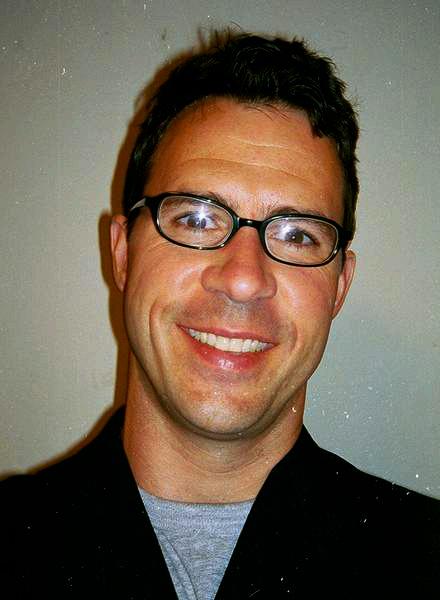
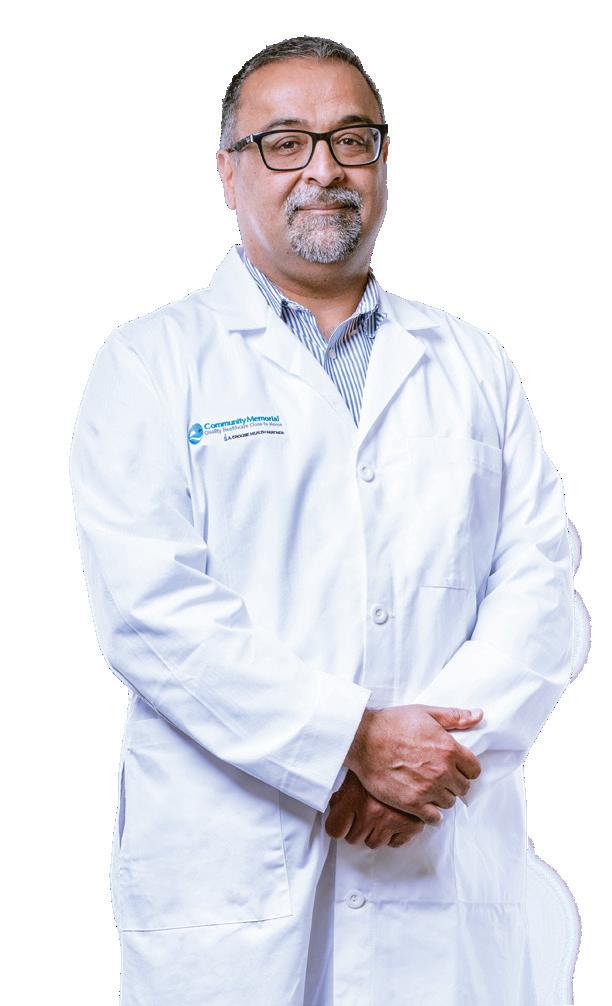
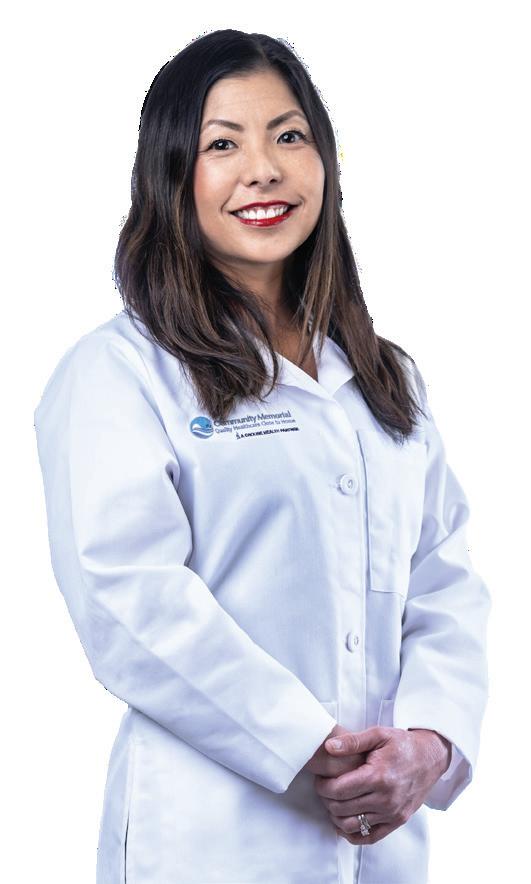
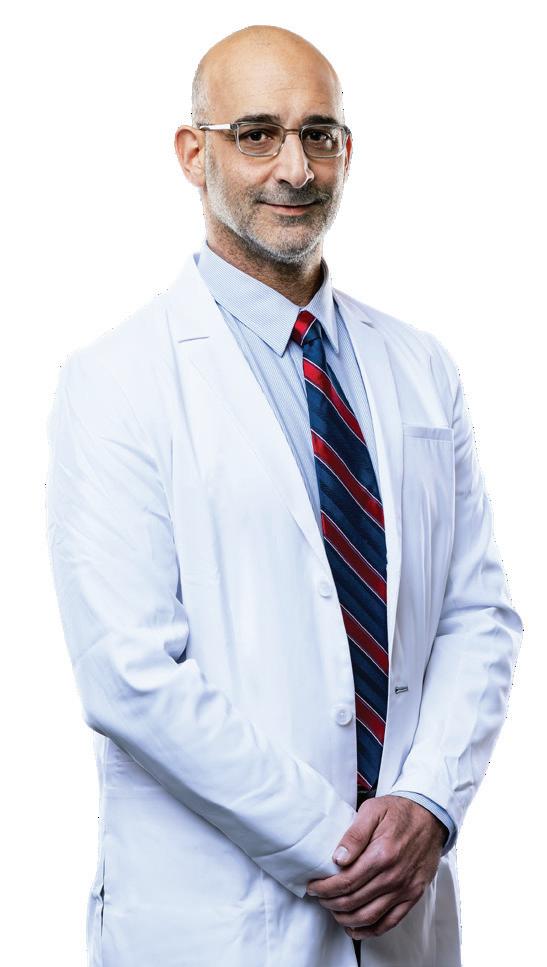
Get the Upstate Advantage for your career! As the region’s largest employer Upstate offers more jobs and more variety, with great benefits. Visit our website to see the most recent offerings.


Send your senior questions to: Savvy Senior, P.O. Box 5443, Norman, OK 73070, or visit SavvySenior. org. Jim Miller is a contributor to the NBC Today show and author of “The Savvy Senior” book.
Mohawk Valley Health System (MVHS) has received accreditation under the American College of Surgeons (ACS) Commission on Cancer (CoC) Accreditation Program.
The ACS CoC is a consortium of professional organizations dedicated to improving survival and quality of life for patients with cancer by setting and raising standards.
CoC accreditation is granted to institutions committed to providing high-quality cancer care by demonstrating compliance with the CoC standards. Each cancer program must undergo a rigorous evaluation and review of its performance and compliance with the CoC standards. To maintain accreditation, cancer programs must undergo a site visit every three years. The CoC accreditation standards supply the structure for providing all patients with a full range of diagnostic, treatment and supportive services either on-site or by referral, including community-based resources.
“This recognition is truly an honor, and it showcases the dedication and hard work from our team members who were instrumental in achieving this distinguished designation,” said Darlene Stromstad, MVHS president and CEO.
As a CoC-accredited institution, MVHS also becomes an ACS Surgical Quality Partner. Being a Surgical Quality Partner signifies an institution’s dedication to consistently improving procedures and approach-
es, while maintaining a critical eye on process at every step. The Surgical Quality Partner designation lets patients know MVHS is dedicated to quality and relentless self-improvement and has been verified or accredited by the ACS. Patients can trust that the care they receive at Surgical Quality Partner hospitals adheres to the most rigorous standards in surgical quality.
Rome Health recently welcomed
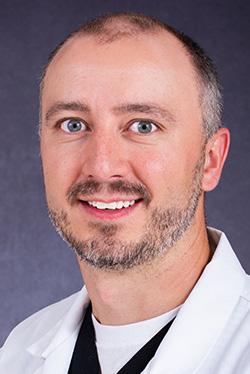
family physician
Michael Parslow to its primary care practice located in the medical center on the main campus of Rome Health.
Parslow is the first of four new primary care providers who will be joining the practice over the next four months.
Parslow has been caring for families since 2017. He grew up in the Hamilton County town of Wells. After graduating from Utica College of Syracuse University with a bachelor’s degree in biology and a minor in chemistry, he earned his Doctor of Osteopathic Medicine degree from Lake Erie College of Osteopathic Medicine in 2014. He completed his family practice residency at St. Elizabeth’s Family Medicine in Utica.
“I love working in family med-

Hamilton Orthopaedics Spine and Sports Medicine, with offices in Hamilton and New Hartford, has become an official partner of Oneida Health.
With the new partnership, Hamilton Orthopaedics surgeons Rudolph Buckley and Russell LaFrance will begin performing most of Hamilton Orthopaedics’ hospital-based surgical procedures in the operating room at Oneida Health Hospital in Oneida.
“Hamilton Orthopaedics and Oneida Health have had a collaborative relationship for years focused
icine,” Parslow said. “One moment I am providing care to someone in their late 70s, early 80s, then my next patient is a 2-year-old child. I enjoy being able to provide care to everyone who is in need of it.”
Parslow said he was attracted to practice in Rome because of the hospital’s transformation and its focus on accessibility. “I heard about the big changes that were happening here at Rome Health and how the hospital has made itself more available to the community,” he said.
Slocum-Dickson Medical Group (SDMG) announced it has been granted continued accreditation by the Accreditation Association for Ambulatory Health Care (AAAHC), an honor that is measured against nationally recognized standards of care.
Accreditation from AAAHC demonstrates Slocum-Dickson’s commitment to providing safe, high-quality health services to patients.
The comprehensive accreditation process included a detailed application followed by an on-site inspection by a team of trained healthcare professionals. The team evaluates Slocum-Dickson’s policies and procedures, including patient safety, quality of care, operational excellence and compliance with federal, state and local laws.
“Achieving this accreditation demonstrates Slocum-Dickson Medical Group’s commitment to providing high-quality care to all of our patients,” said Slocum-Dickson
counties.
“There are many patient care and logistical advantages to providing hospital-based surgical care in a centralized location,” said LaFrance. “Together, we can create an efficient, cohesive team focused on the continuous growth of surgical outcomes and recovery for patients of Hamilton Orthopaedics through enhanced continuity of care.”
With the agreement, Hamilton Orthopaedics will continue maintaining and operating their out-patient offices. Oneida Health will also continue operating its orthopedic office, Oneida Health Orthopedics, in Oneida.
Medical Group’s Chief Operating Officer Denise Barr. “It reflects the hard work and dedication of our physicians and staff in delivering healthcare to the community.”
Slocum-Dickson Medical Group recently announced the addition of three highly skilled healthcare professionals.
• Ashley Fahy holds a Master of Science in nursing from SUNY Polytechnic Institute and board certification as a family nurse practitioner. Fahy is working in collaboration with pediatrician Elaine Tsukayama.
• Meghan Frye obtained her Master of Science in physician assistant studies with honors from Weill Cornell Graduate School of Medical Sciences. She is working in collaboration with dermatologist Marwan Al-Haddad. Her passion for patient-centered care aligns perfectly with Slocum-Dickson’s values.
• Jennefer Will holds a Master of Science from the family nurse practitioner program at SUNY Upstate. She is working in collaboration with physician Mohsin Syed in internal medicine.
Rome Health was awarded the Claire Murray Best Practices Award at the NYONL annual meeting and leadership conference for its innovative strategies to prepare and support new nurses as they transition from the classroom to the bedside. The award, sponsored by New York Organization for Nursing Leadership, recognizes continued achievements in transforming nursing and patient care.
More than 80 applicants submitted abstracts for consideration and Rome Health’s abstract was one of six selected for an award.
The abstract was prepared by Chief Nursing Officer VP Clinical Services Ashley Edwards and Transitions to Practice and Extern Program Director McKayla Turnbull.
on providing high-quality orthopedic services to patients in Central New York,” said Buckley. “Our new partnership will provide a centralized location for Hamilton Orthopaedics patients to receive the high level of quality hospital-based surgical care they are accustomed to in a stateof-the-art operating room at Oneida Health.”
Before the agreement with Oneida Health, the practice’s surgeons performed surgical services across multiple healthcare locations in Chenango, Madison and Oneida
“We welcome Dr. Buckley and Dr. LaFrance to our Orthopedic Surgical team,” said physician M. Asad Khalid, chief of surgery and director of orthopedic surgery at Oneida Health. “Their addition to our orthopedic surgical team will increase access to more orthopedic services previously unavailable in Oneida for the communities we serve throughout Madison and Oneida counties.”
“For many years, our community has needed increased access to orthopedic services,” said Felissa Koernig, president and CEO of Oneida Health. “The opportunity to partner with two locally renowned orthopedic surgeons, Dr. Buckley and Dr. LaFrance, and to bring their surgical services to Oneida only elevates the high level of orthopedic surgery Oneida Health already provides.”
“At Rome Health, we created the nurse extern program for senior student nurses to foster resiliency and clinical excellence,” Edwards said. “Physical and emotional burnout are lead contributors to newly licensed nurse turnover. Job stress, lack of support, inadequate training, worklife balance and low job satisfaction all contribute to burnout.”
“Retention rates double for new nurses that participate in the extern program,” Edwards said, citing retention rates of 80 to 100 percent since 2021 for externs. “At Rome Health, we are committed to setting people up for success and fostering ongoing professional development throughout their career.”
According to Turnbull, the extern program takes a multidisciplinary approach at the student nurse level, through improved support systems, early exposure to the healthcare setting, and a robust training program that promotes a foundation of resiliency.
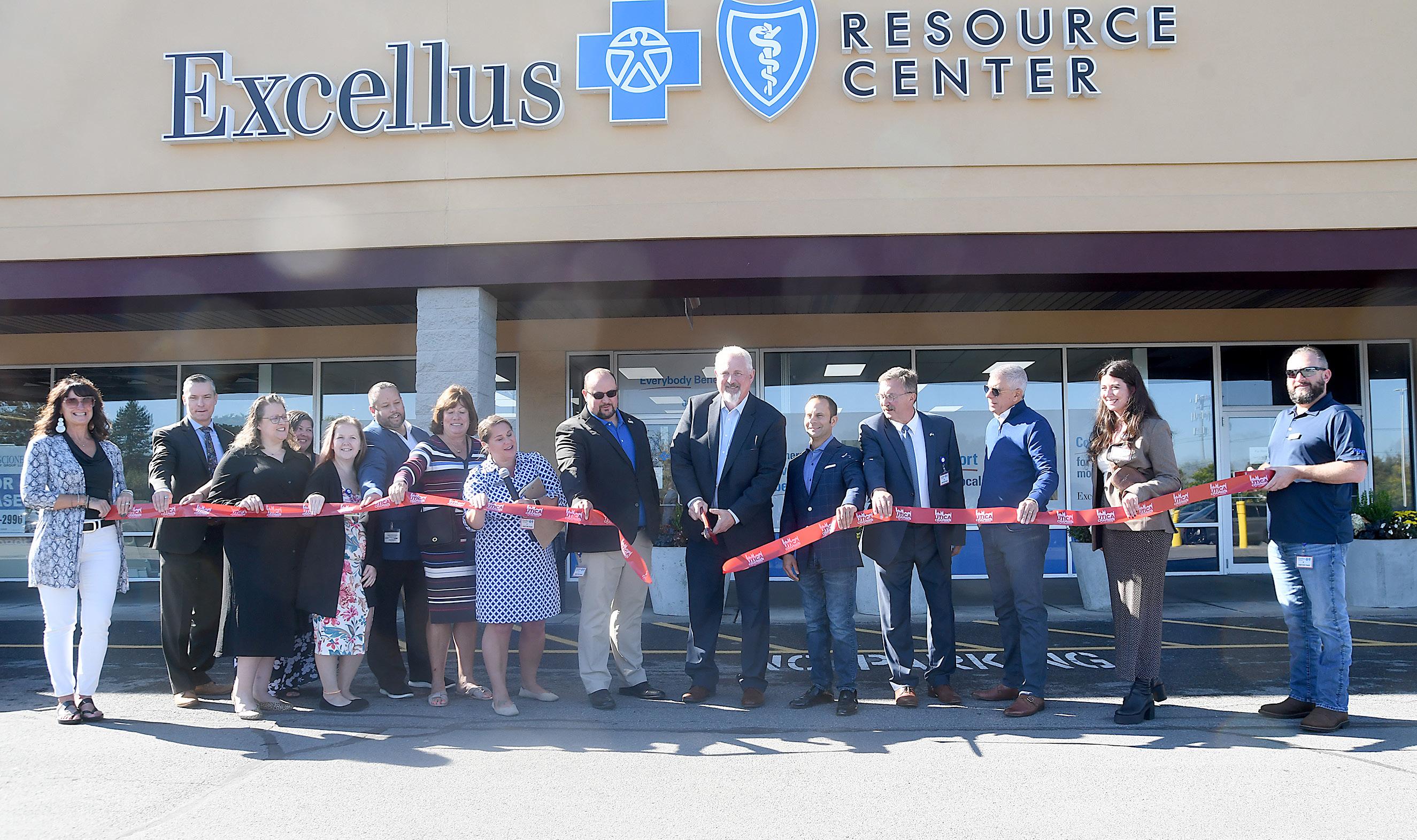
facing office in the Utica region. It offers retail sales consultants who are available to assist individuals looking to enroll in health insurance coverage regardless of their age or financial status. Consultants can also assist people looking to enroll in a Medicare Advantage Plan or a Medicare Supplement Plan.
Enrollment specialists are also on hand to assist anyone who is not eligible for Medicare with enrolling in an individual product on or off the New York State of Health Marketplace, including qualified health plans, the essential plan, child health plus and Medicaid managed care.
The center also has customer care advocates onsite for face-to-face visits about claims, billing, benefits and any other questions existing members may have.
“We’re very excited to bring this valuable resource to New Hartford,” said Vitagliano. “The center is a perfect spot for members of the public to go to have all of their health insurance questions answered.”
In addition to the Excellus BCBS Resource Center of the Mohawk Valley, the insurer has regional centers in





Hybrid Nurse Aide Training Program
Hybrid Nurse Aide Training Program
Hybrid Nurse Aide Training Program ELEMENTAL MANAGEMEN UP




Hybrid Nurse Aide Training Program ELEMENTAL MANAGEMENT GROUP
















OUP
MANAGEMENT GROUP

Equip your facility with our unstoppable HYBRID CNA program, empower your team to deliver top-notch care with the strength of a champion.
Equip your facility with our unstoppable HYBRID CNA program, empower your team to deliver top-notch care with the strength of a champion.
Equip your facility with our unstoppable HYBRID CNA program, empower your team to deliver top-notch care with the strength of a champion.
Equip your facility with our unstoppable HYBRID CNA program, empower your team to deliver top-notch care with the strength of a champion.
Are you looking for an innovative way to attract CNA students? We have your answer
Are you looking for an innovative way to attract CNA students? We have your answer
Are you looking for an innovative way to attract CNA students? We have your answer
Are you looking for an innovative way to attract CNA students? We have your answer
Are you looking to minimize and most importantly eliminate agency use? We have your solution
Are you looking to minimize and most importantly eliminate agency use? We have your solution
Are you looking to minimize and most importantly eliminate agency use? We have your solution
Are you looking to minimize and most importantly eliminate agency use? We have your solution
Are you looking to improve morale by increasing your direct care PPD? Reach out to us to hear more
Are you looking to improve morale by increasing your direct care PPD? Reach out to us to hear more
Are you looking to improve morale by increasing your direct care PPD? Reach out to us to hear more
Are you looking to improve morale by increasing your direct care PPD? Reach out to us to hear more
Are you looking to captivate and motivate the newer generation by offering unique and rewarding training opportunities? Look no further contact us today
Are you looking to captivate and motivate the newer generation by offering unique and rewarding training opportunities? Look no further contact us today
Are you looking to captivate and motivate the newer generation by offering unique and rewarding training opportunities? Look no further contact us today
Are you looking to captivate and motivate the newer generation by offering unique and rewarding training opportunities? Look no further contact us today
CONTACT:

Peg Reith BSN, RN
CONTACT:
Peg Reith BSN, RN
CONTACT:
Phone: 315-529-3267
Phone: 315-529-3267
Email: CNA_Training@elementalmgt.com
CONTACT:
Peg Reith BSN, RN
Email: CNA_Training@elementalmgt.com
Peg Reith BSN, RN
Phone: 315-529-3267
Phone: 315-529-3267
Email: CNA_Training@elementalmgt.com
Email: CNA_Training@elementalmgt.com



















